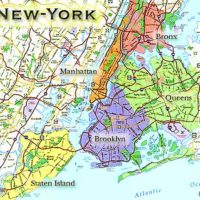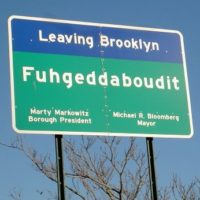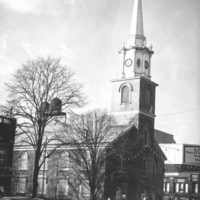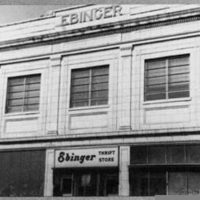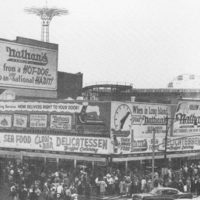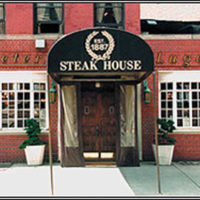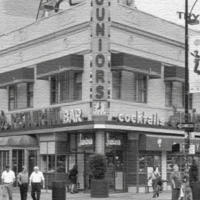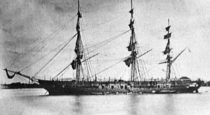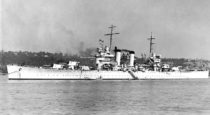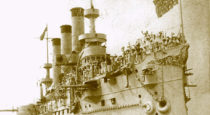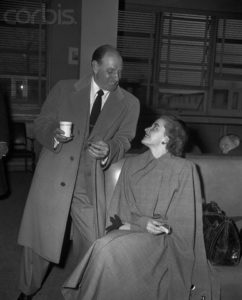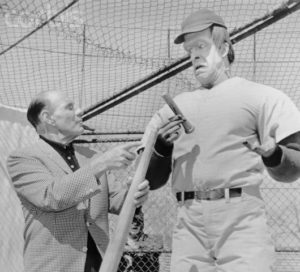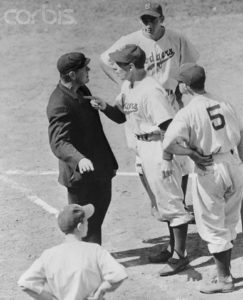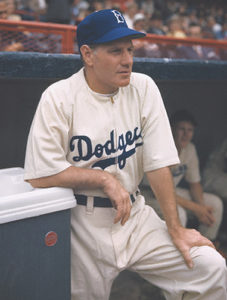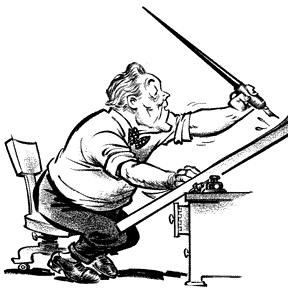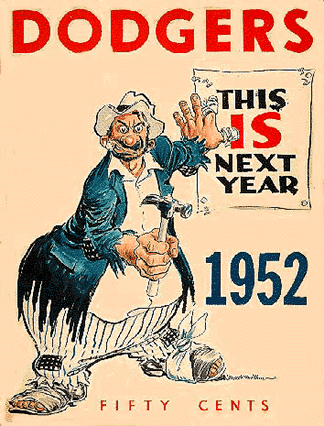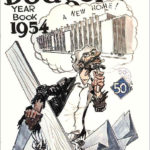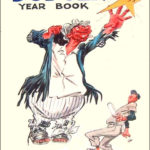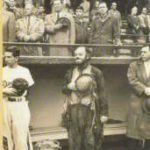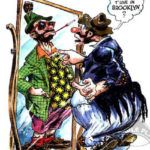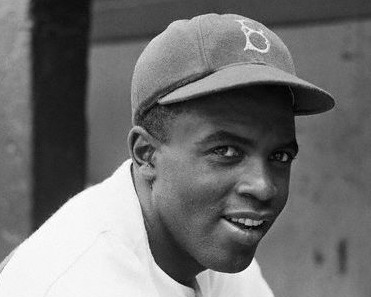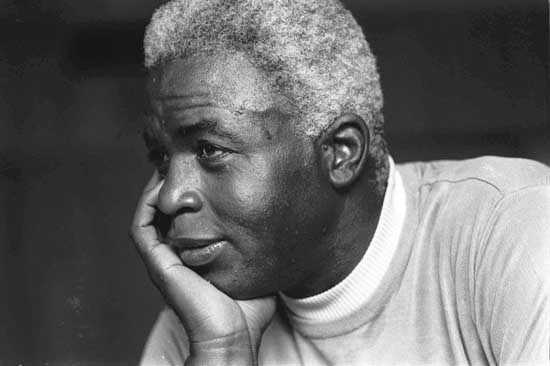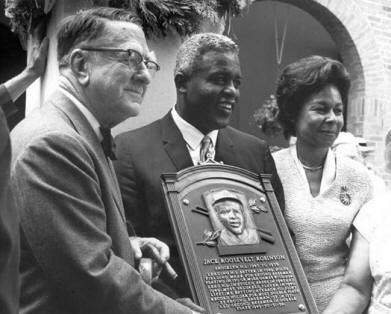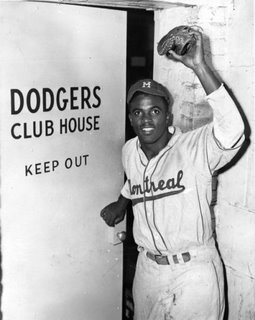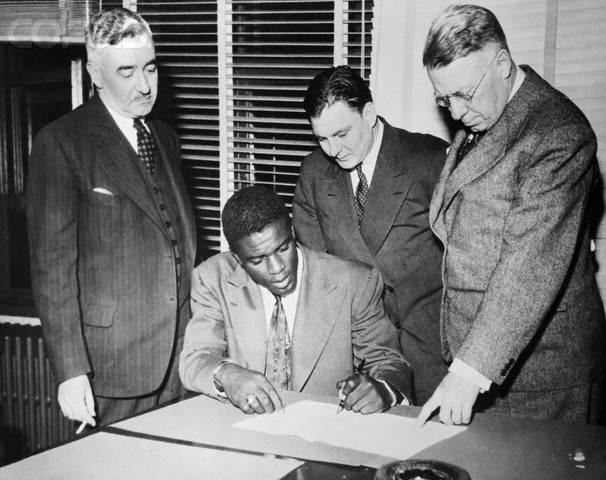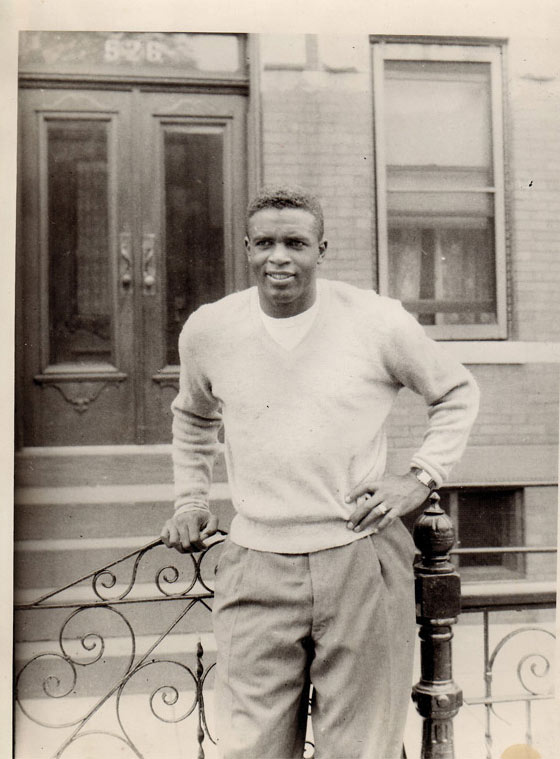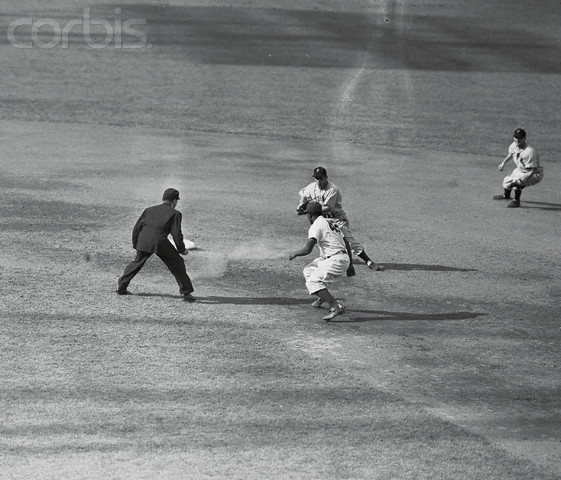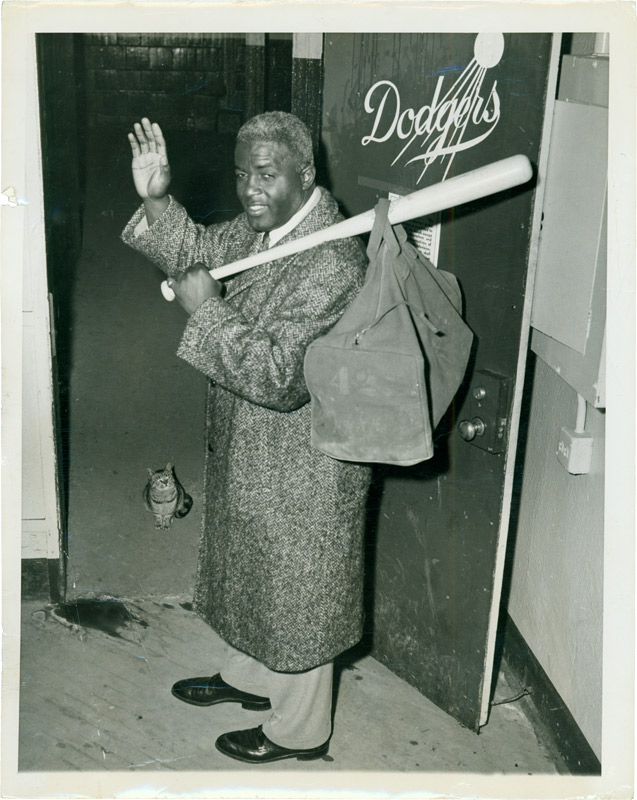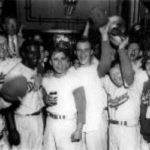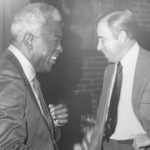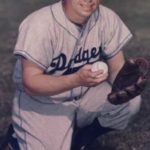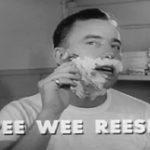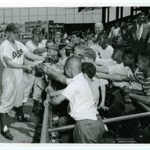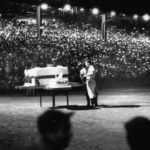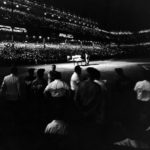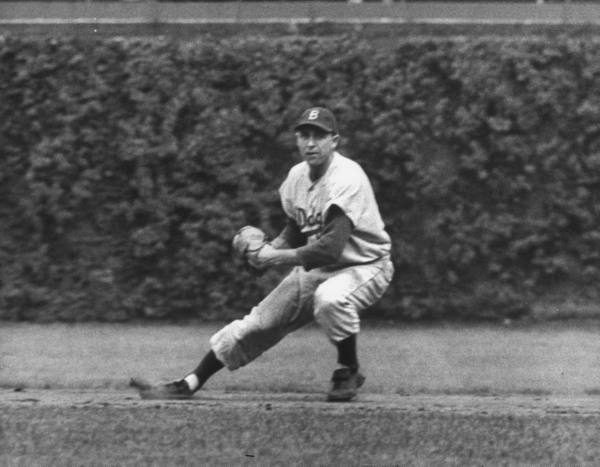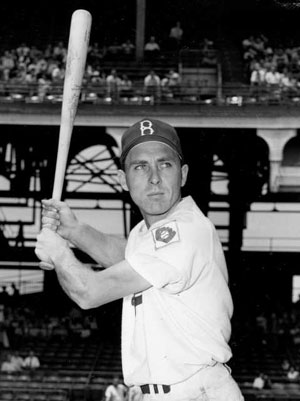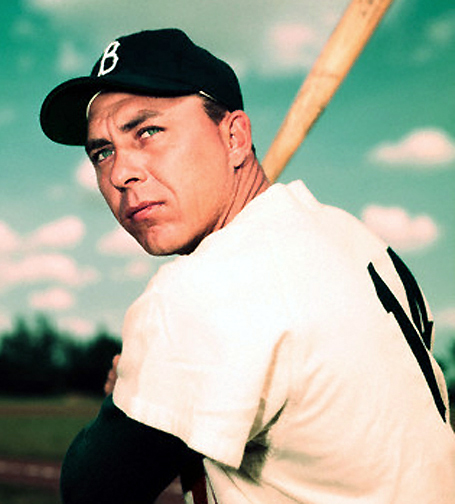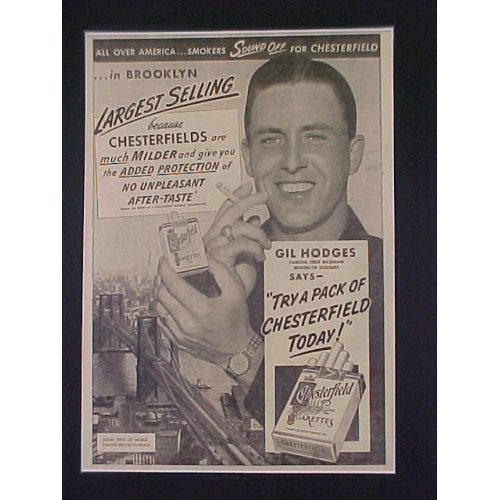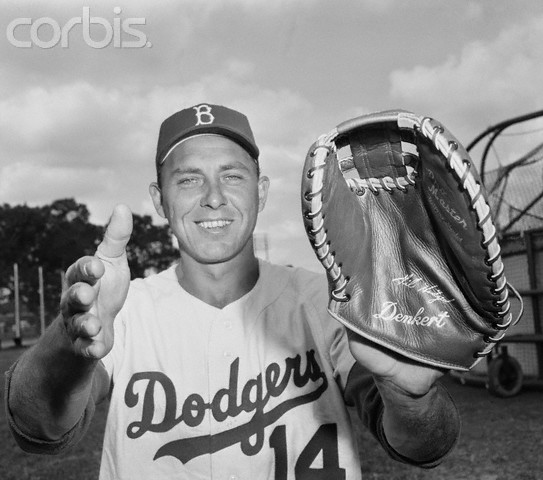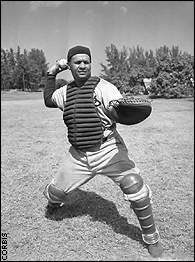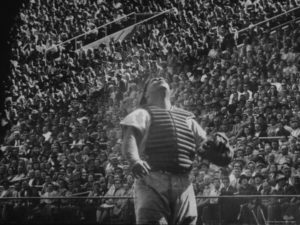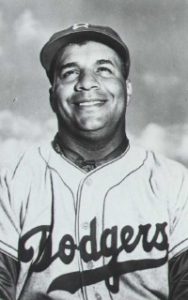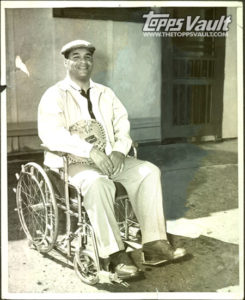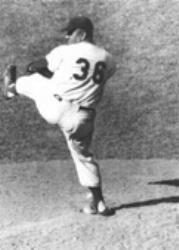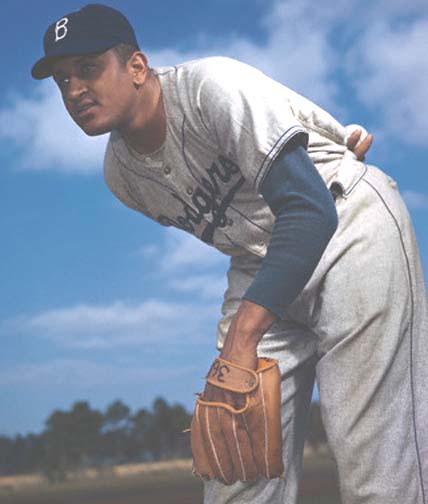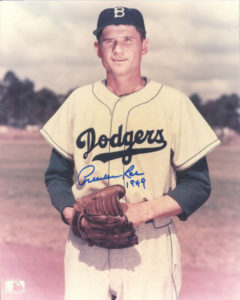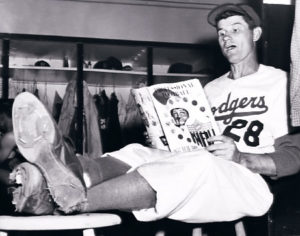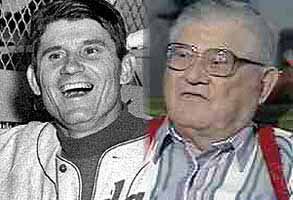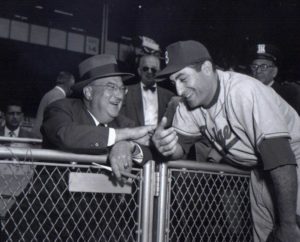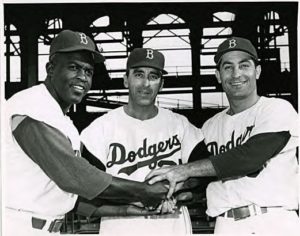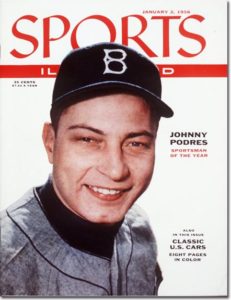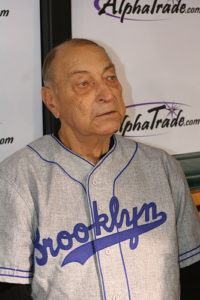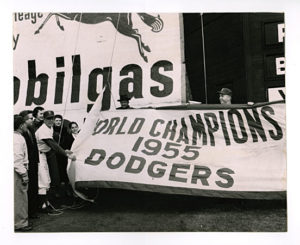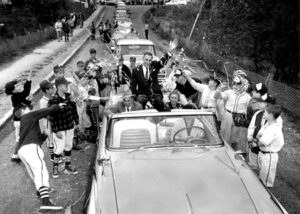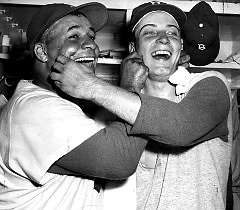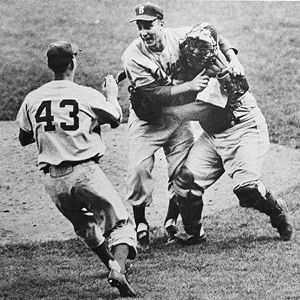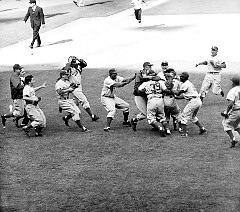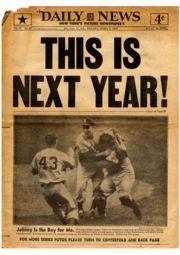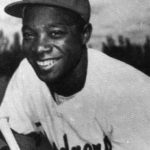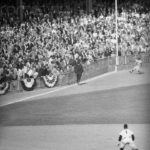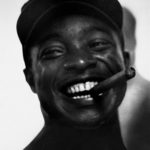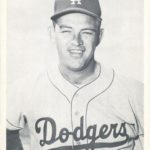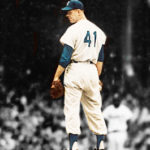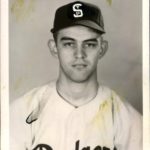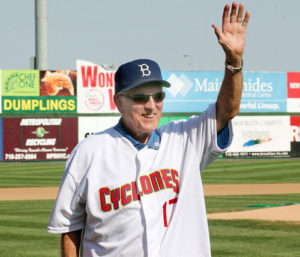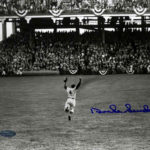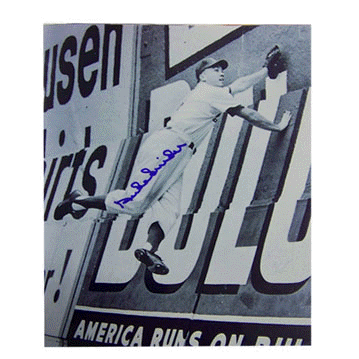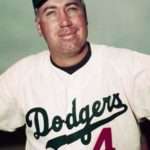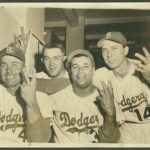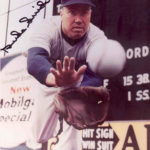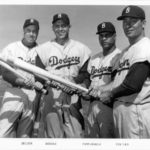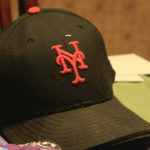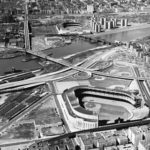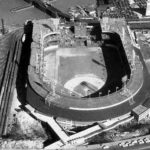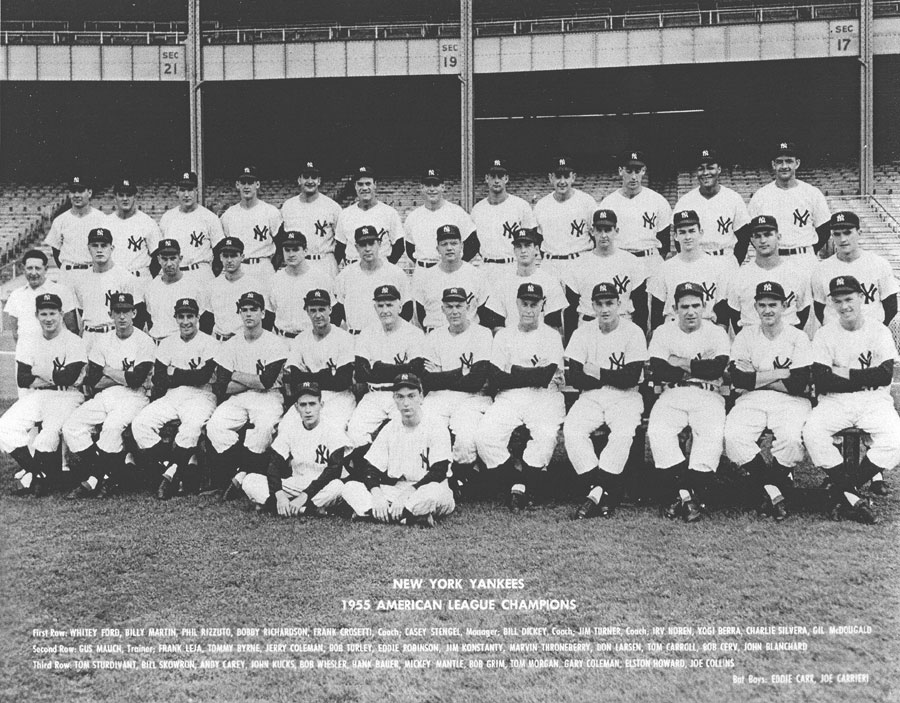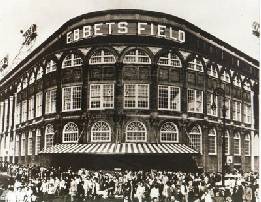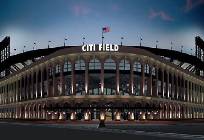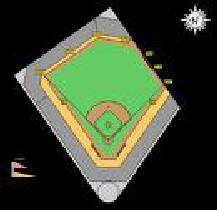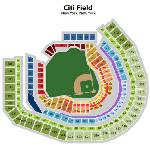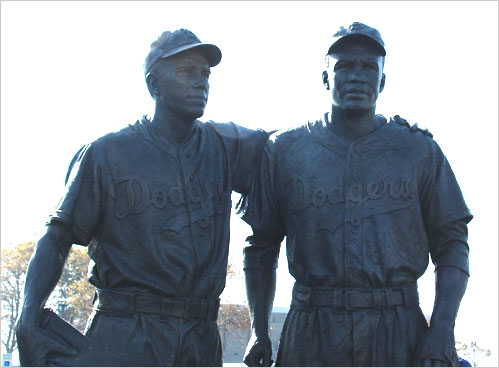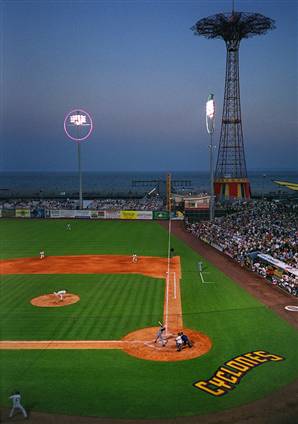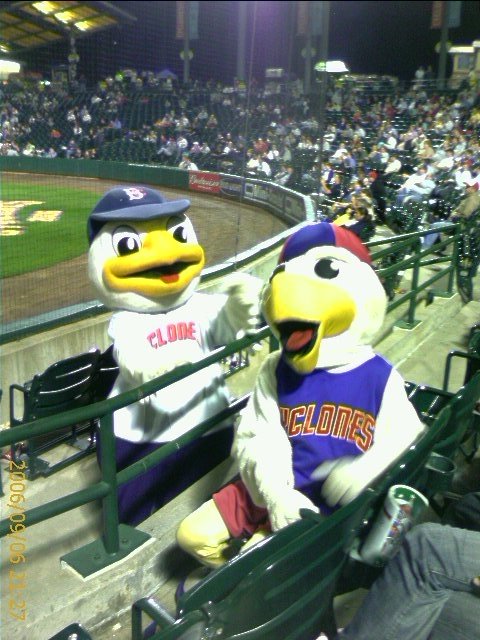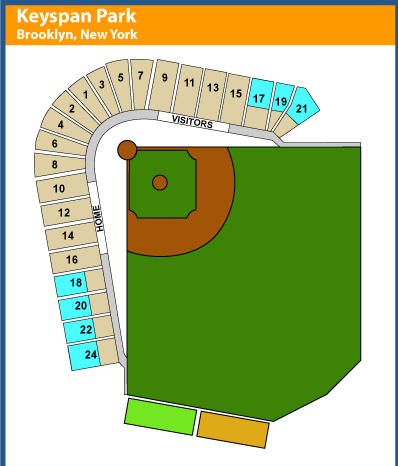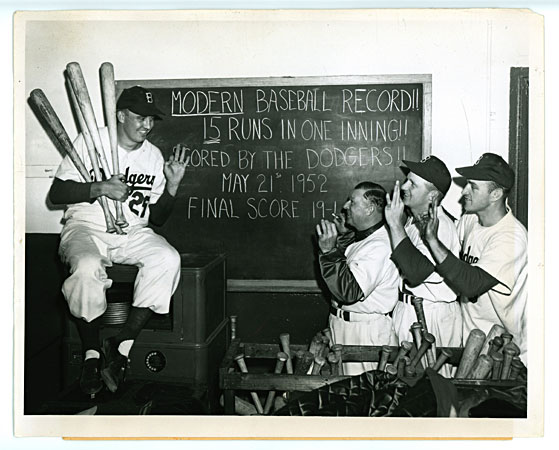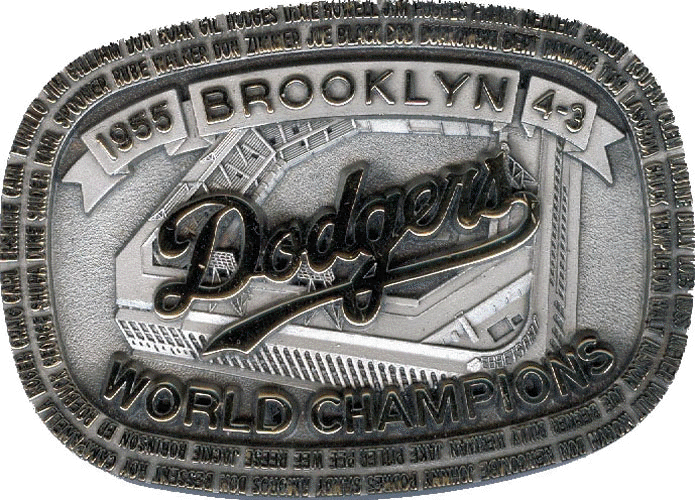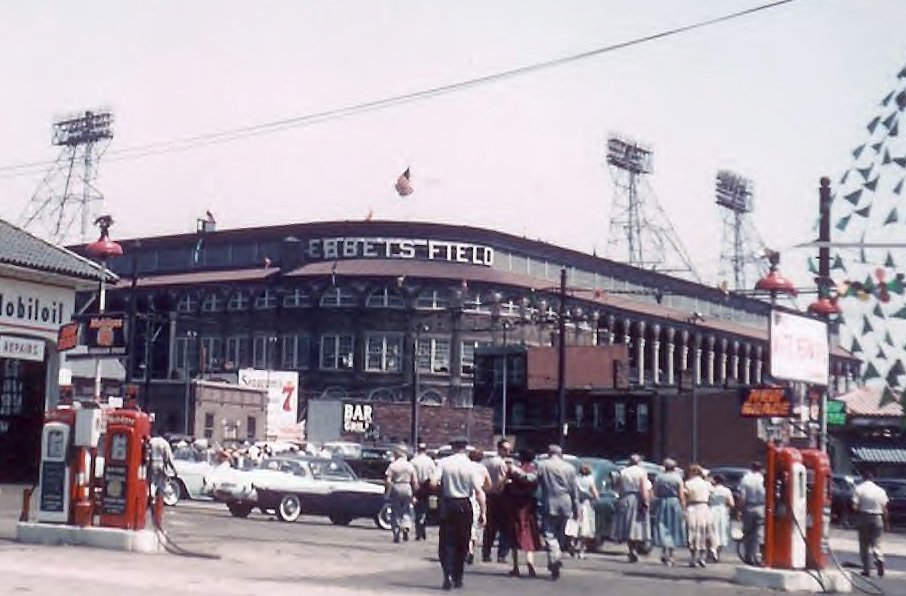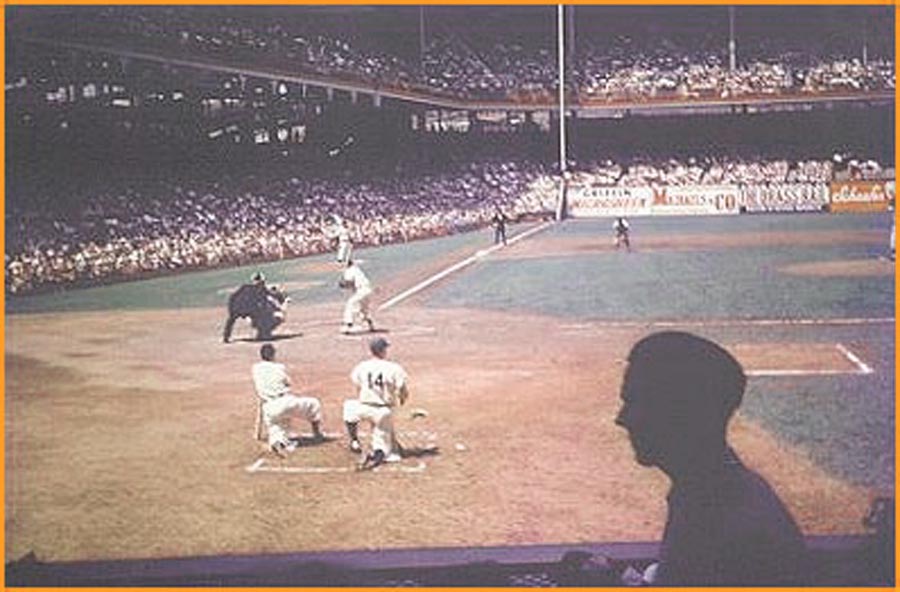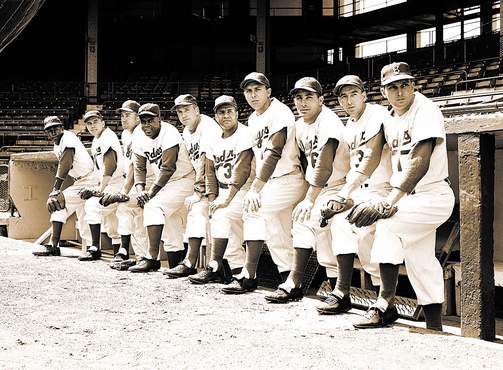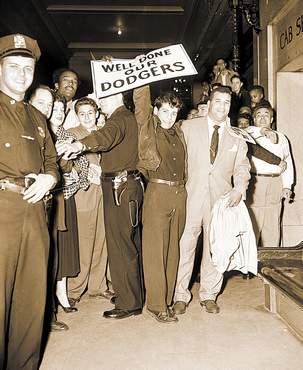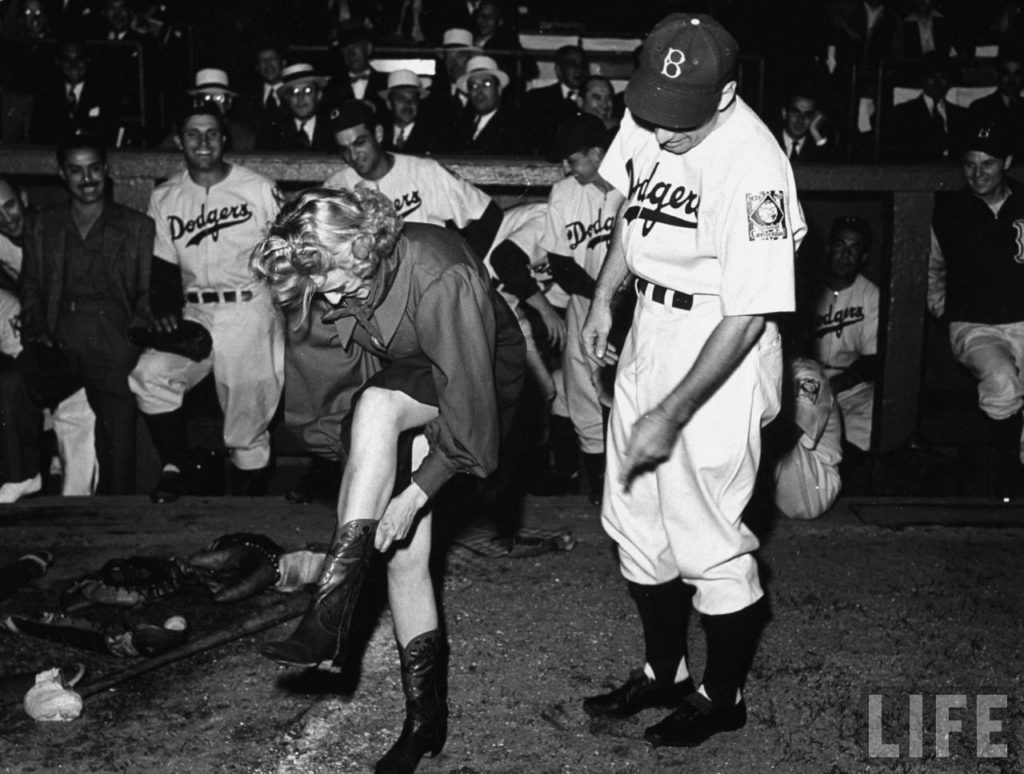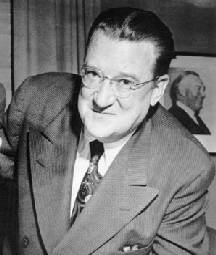 The Brooklyn Dodgers are one of the most storied and fabled teams in all of baseball history.
The Brooklyn Dodgers are one of the most storied and fabled teams in all of baseball history.
Officially named “The Brooklyn Base Ball Club, Inc.” throughout it’s history, the team that would become known as The Brooklyn Dodgers was established in 1883 and joined the American Association in 1884; they won the American Association Pennant in 1889 and joined the National League in 1890, where they remained. Winning the National League Pennant in 1890 makes the Dodgers the only team to win back-to-back Pennants in opposing leagues, ever.
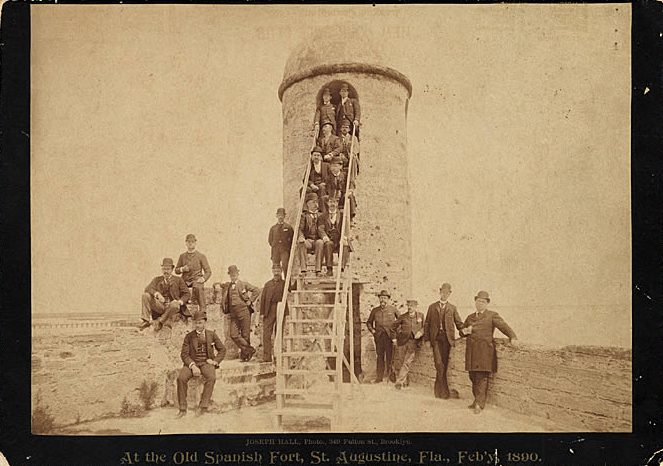
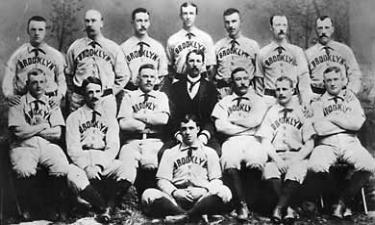
The 1890 Brooklyn “Superbas” after winning the NL Pennant
Team names were fluid in the early days, and were bestowed by sportswriters as a form of shorthand. Frequently, the same team was identified by different names even in the same news article. Teams themselves were just as fluid. The 1898 Baltimore Orioles were moved to Brooklyn en masse by their joint owners, becoming 1899’s Dodger lineup. (A sidelight: The Baltimore Orioles were reestablished under new ownership in 1901, and moved to New York in 1903, becoming first the Highlanders and then the New York Yankees! The current Baltimore Orioles are the former St. Louis Browns.) It is the Brooklyn Dodgers, however, who hold the distinction of having the most monikers.
The Brooklyn team was called by a variety of nicknames before the name “Dodgers” finally became exclusive, sometime as late as the 1930s. They were originally called the “Brooklyn Atlantics,” and then the “Brooklyn Grays.” New Yorkers took to calling them the “Brooklyn Bridegrooms” after many of the team’s players got married in quick succession. They earned the nickname “Trolley Dodgers” (or just “Dodgers”) during the 1890s, because fans and players had trouble accessing their home field, which was surrounded by a knot of busy trolley lines; it was said that fans and players literally had to “dodge the trolleys” while crossing the street to reach the ballpark. Managed by Ned Hanlon in the years 1899 to 1905, they were also nicknamed after a popular vaudeville revue of the era, “Hanlon’s Superbas.” It was as the “Superbas” that the team won its early Pennants and the Pennants of 1899 and 1900 as well
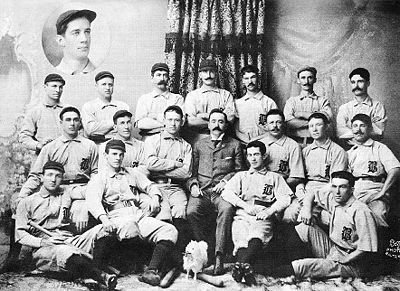 The 1898 Baltimore Orioles moved away from Maryland and became the Pennant-winning 1899 Superbas
The 1898 Baltimore Orioles moved away from Maryland and became the Pennant-winning 1899 Superbas
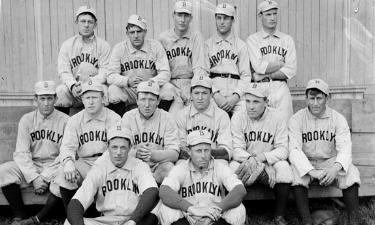
Besides “Dodgers,” all these names were used interchangeably by the press, along with the moniker, “The Brooks,” short for Brooklyn. The fans called them “Dem Bums” (when they played badly) or “Our Bums” (when they played well). Either way, the “Brooklyn Bums” became one of the most successful franchises in baseball history.
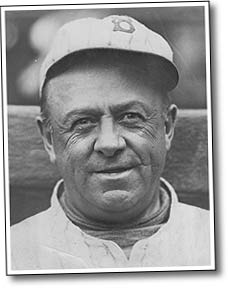
“Uncle Robbie: Like his hat, his Daffiness Boys were frequently cockeyed”
The team became known as the “Robins” in 1914, after manager Wilbert Robinson, who managed the team until 1931. “Uncle Robbie” led them to two Pennants in 1916 and 1920. But Uncle Robbie’s tenure was marked by continuous decline, mismanagement on the field, and acrimony between the team’s owners. Without meaningful leadership, the “Daffiness Boys” became the laughingstock of professional baseball, never rising above sixth place in the standings.
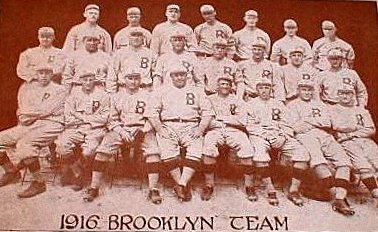 The “Robins” lost the Series to Babe Ruth’s Boston Red Sox
The “Robins” lost the Series to Babe Ruth’s Boston Red Sox
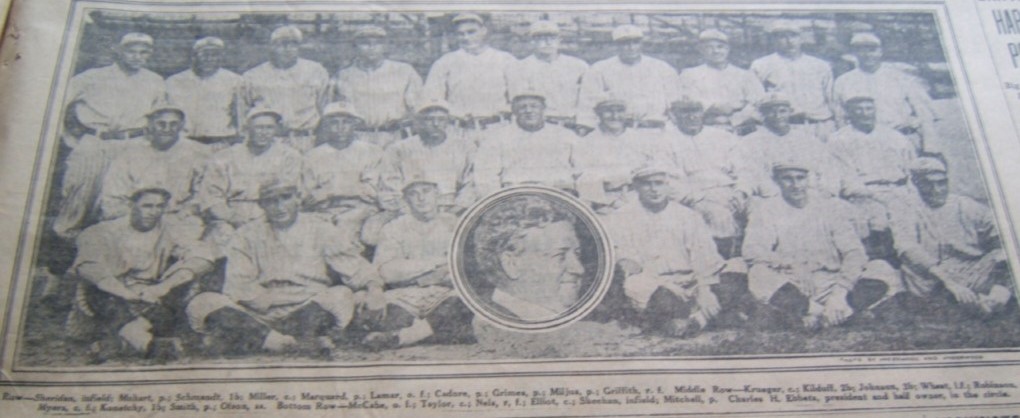
Early Dodger teams played in three ballparks, the trolley-choked Eastern Park and two incarnations of Washington Park. Team owner Charles Ebbets, dedicated to keeping the Dodgers in Brooklyn, decided to replace rickety Washington Park with a modern brick-and-mortar stadium. Ebbets quietly acquired parcels of land in the area then known as “Pigtown,” until he owned an entire block of lots. The new stadium, named for Ebbets, opened its gates on April 9, 1913. While Ebbets himself preferred to keep the name “Washington Park” for the new location, he was overruled by the other Dodgers stockholders who wanted to honor his efforts, but he did manage to avoid the proprietary-sounding “Ebbets’s Field,” as he modestly believed the field belonged to the fans, not to himself.
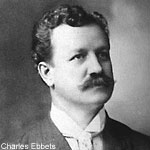
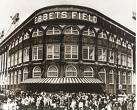
Charles Ebbets around the time he bought the Dodgers, and the home in built for them
Other than winning the Pennant in 1916 and again in 1920, Athe team had limited success in the Nineteen-Teens, ‘Twenties and ‘Thirties, until the gifted Branch Rickey became managing owner. “Baseball’s Ferocious Gentleman,” made the Dodgers perennial contenders. They hosted the 1949 All Star Game, and won National League Pennants in 1941, 1947, 1949, 1952, 1953, 1955, and 1956, but were defeated in the World Series six of these seven times by the New York Yankees. And so it was Brooklyn that gave birth to the immortal baseball slogan, “Wait Till Next Year!

1941

1947

1949

1952
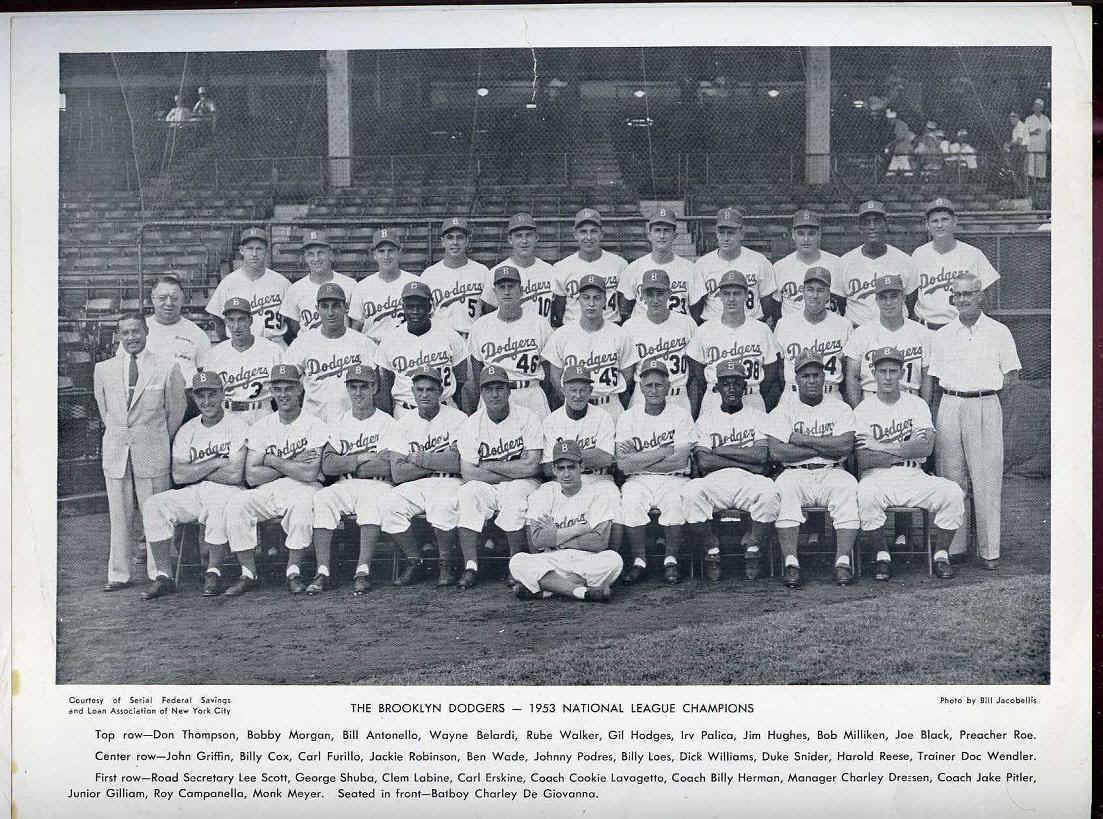
1953
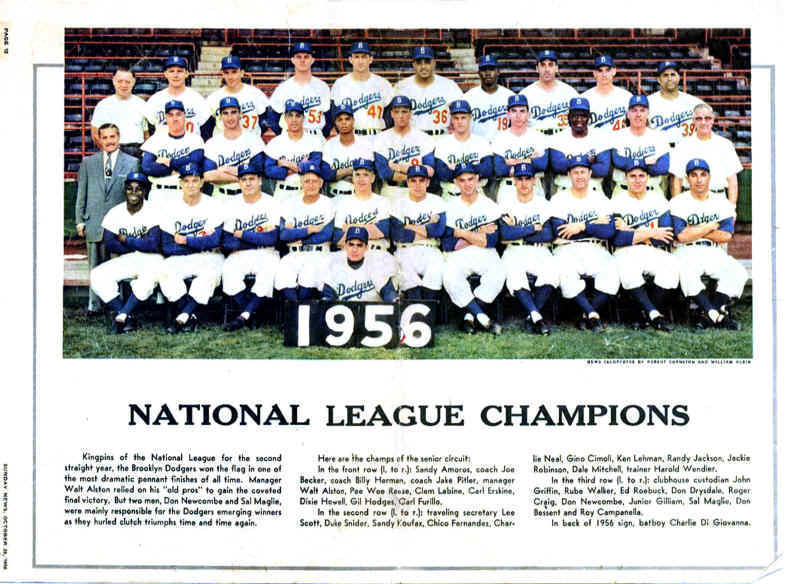
1956
The only Brooklyn Dodgers team to ever win the World Series did so in 1955.
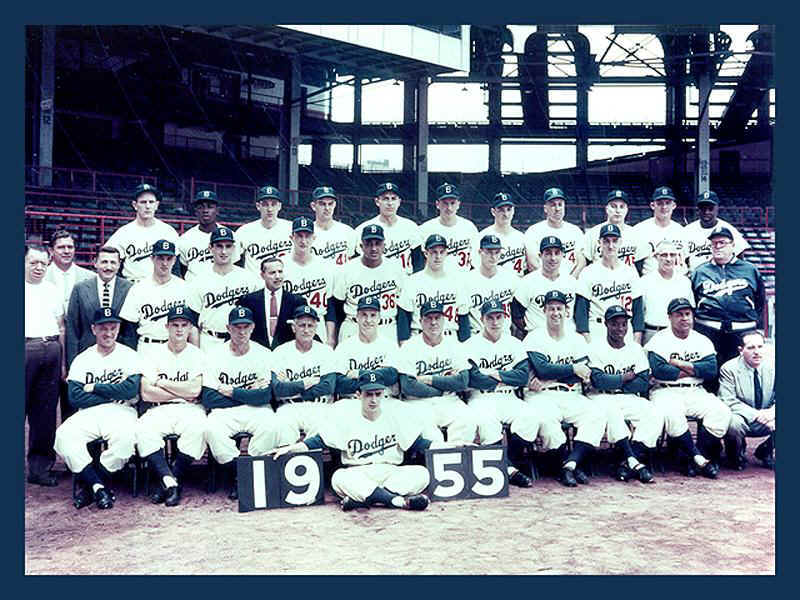
The ballpark has been featured in many books and films, both fiction and non-fiction. But the most historically significant aspect of Brooklyn Dodgers history was their breaking of the color barrier by signing a young, talented African-American player, Jackie Robinson, who first stepped onto the grass at Ebbets Field on April 15, 1947. Winner of the first ever Rookie of the Year award and a member of the Baseball Hall of Fame, Robinson’s placement in the daily lineup ended almost 80 years of racial segregation in baseball. On the 50th anniversary of his debut in 1997, all of Major League Baseball retired Robinson’s jersey number, 42.
After the 1957 season, the Brooklyn Dodgers were unilaterally moved to Los Angeles by their unscrupulous owner, Walter O’Malley, in despite of almost eighty years of intimate association with the City of Brooklyn—ending an era.
Ebbets Field, unused, was demolished on February 23, 1960.
April 15, 1947: The Day That Changed America Forever
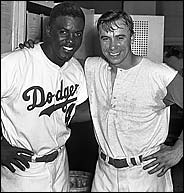
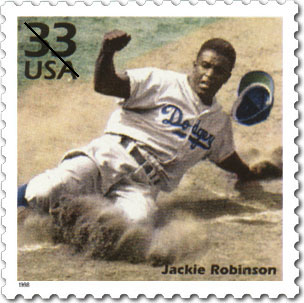
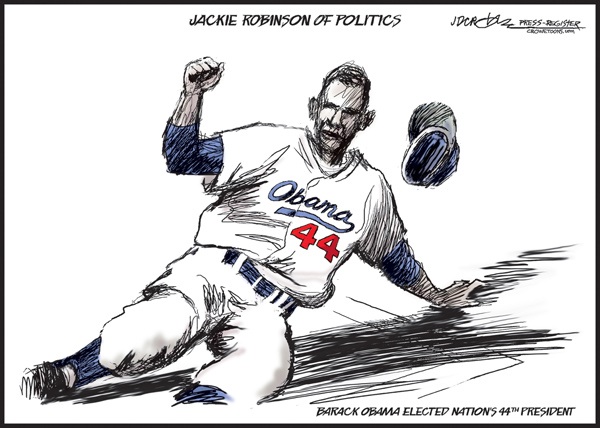 Pee Wee, Jackie and Me—KeySpan Park, July 13, 2008;
Jackie, Pee Wee, Spider Jorgensen and Eddie Stanky just moments before Jackie took the field—Ebbets Field, April 15, 1947
Pee Wee, Jackie and Me—KeySpan Park, July 13, 2008;
Jackie, Pee Wee, Spider Jorgensen and Eddie Stanky just moments before Jackie took the field—Ebbets Field, April 15, 1947
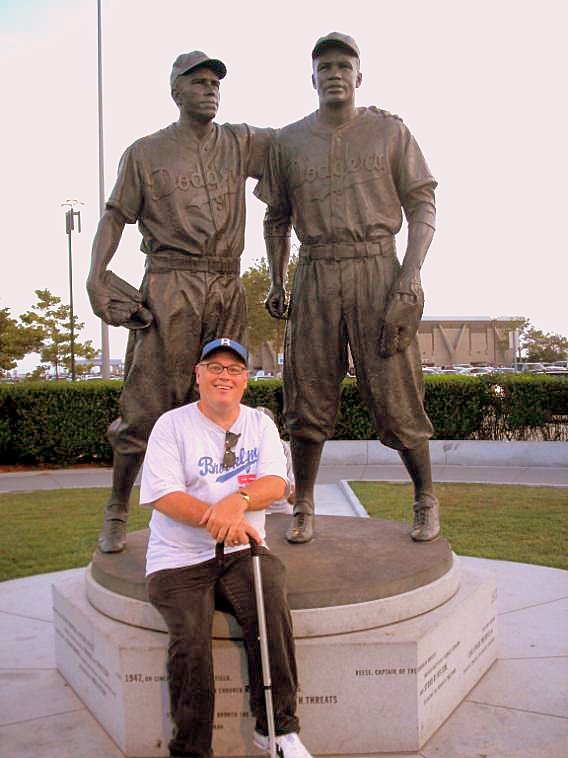
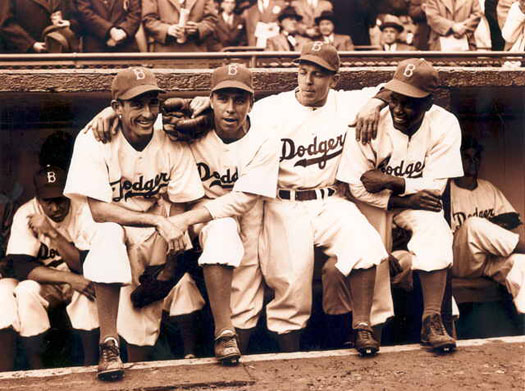 Jackie signs with the Dodgers while Branch Rickey looks on
Jackie signs with the Dodgers while Branch Rickey looks on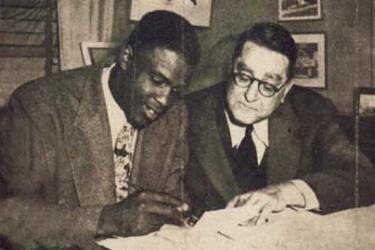 April 15, 1947 marked the beginnings of a seismic shift in America’s social structure, for that was the day that Jack Roosevelt “Jackie” Robinson (1919-1972) first stepped upon the green, green grass of the ballpark that was to be his home for the next nine years, Ebbets Field. By taking that momentous step, Jackie shattered the color line in our National Pastime, forcing too many unwilling Americans to acknowledge his presence and talents on the field. Although welcomed in ethnically and racially diverse Brooklyn, Jackie faced horrific resistance—even death threats— from fans and players in other cities. But by being the first Rookie of the Year, and MVP, and the man who still holds the Dodger record for the most steals of Home (19), Jackie changed America profoundly He may not have succeeded so well had it not been for Harold Henry “Pee Wee” Reese, a native Kentuckian, a son of the South, and the Dodgers’ team Captain. One day during a 1947 road trip, Pee Wee braved trash, spit, catcalls and threats to stride onto the field and embrace Jackie, telling all of America that he was a Brooklyn Dodger and was here to stay. The moment was immortalized in bronze at the entrance to KeySpan Park in Coney Island, Brooklyn, New York, the home of the New York Mets “A” affiliate, the Brooklyn Cyclones. Pee Wee, Jackie and I shared a victorious moment together on July 13, 2008, after a Cyclones victory over the State College Spikes.
April 15, 1947 marked the beginnings of a seismic shift in America’s social structure, for that was the day that Jack Roosevelt “Jackie” Robinson (1919-1972) first stepped upon the green, green grass of the ballpark that was to be his home for the next nine years, Ebbets Field. By taking that momentous step, Jackie shattered the color line in our National Pastime, forcing too many unwilling Americans to acknowledge his presence and talents on the field. Although welcomed in ethnically and racially diverse Brooklyn, Jackie faced horrific resistance—even death threats— from fans and players in other cities. But by being the first Rookie of the Year, and MVP, and the man who still holds the Dodger record for the most steals of Home (19), Jackie changed America profoundly He may not have succeeded so well had it not been for Harold Henry “Pee Wee” Reese, a native Kentuckian, a son of the South, and the Dodgers’ team Captain. One day during a 1947 road trip, Pee Wee braved trash, spit, catcalls and threats to stride onto the field and embrace Jackie, telling all of America that he was a Brooklyn Dodger and was here to stay. The moment was immortalized in bronze at the entrance to KeySpan Park in Coney Island, Brooklyn, New York, the home of the New York Mets “A” affiliate, the Brooklyn Cyclones. Pee Wee, Jackie and I shared a victorious moment together on July 13, 2008, after a Cyclones victory over the State College Spikes. I’ve included pictures of these three fine vessels as a matter of civic pride.
Why Brooklyn?
Brooklyn occupies 100 square miles of the extreme southwestern end of Long Island. Few Brooklynites even realize they are Long Islanders. When New Yorkers say “The Island” they usually mean the suburban counties of Nassau and Queens, which are not Boroughs of New York City. Likewise, “The City” is used to refer to Manhattan (and Manhattan alone).
Brooklyn was accessible to Manhattan only by ferry until 1883, when Washington Roebling completed the mighty Brooklyn Bridge, which spans the East River. At the time of its opening, the Brooklyn Bridge was the largest suspension bridge in the world. It is instantly recognizable by its granite towers, with their distinctive twin Gothic arches.
Brooklyn was its own city before Greater New York swallowed it whole in 1898 (by only a few hundred “yea” votes out of 70,000 cast). It was known as “The City Across The River” or “The City of Churches.” For much of its history, Brooklyn was an absolutely bucolic place to live, dotted with brownstone houses and farmsteads, the preserve of the descendants of the Dutch Burghers of New Amsterdam and their British successors. Brooklyn , in fact, in place names and historic associations, retains more of its Dutch flavor than any other Borough, right down to its name, an Anglicization of “Breukelen,” a town in The Netherlands.
As a Borough, it was big and klutzy, the unshaven bigger, younger blue-collar brother of chi-chi Beau Brummell Manhattan. Brooklyn’s population has always exceeded that of any other Borough, and in its own way, Brooklyn has been far more diverse and interesting than its more famous rival. Brooklyn neighborhoods were (and are) very unique in that they were (and are) small, densely populated, and largely ethnically homogeneous in and of themselves, being cheek-by-jowl with other such neighborhoods (sometimes groups shared neighborhoods, with varying levels of ease). Hence, there was largely Jewish Brownsville; there was (and is) largely Italian Bay Ridge; there was (and is) a Norwegian enclave in Bay Ridge, too; there was (and is) Hasidic Crown Heights and Hasidic Borough Park, and (was and is) an African-American section of Crown Heights.
Brooklyn’s wharves were busier than New York’s. It had more breweries than either Milwaukee or St. Louis. It’s said that over 400 languages are daily spoken in Brooklyn, more than any other place in the entire world, and that people from every nation can be found within its borders. Demographers tell us that 25% of all United States citizens can trace a connection back to Brooklyn. The closely-voted decision to join New York City is often referred to locally as “The Mistake of ’98” with good reason.
In the early twentieth century, Brooklyn grew at a fantastic rate as immigrants and the children of immigrants streamed (as they still do) into its hundred square miles seeking relief from the overcrowding of Manhattan’s Lower East Side. The immigrants developed their own patois that reflected a mixture of their varying accents newly-leavened with the day-to-day details of Brooklyn life. For example:
“Oil” is a British lord. “Earl” is what you put in your car.
“Toity-Toid An Toid” is an intersection in Manhattan.
“Hey! Howya doin’?” is the proper form of address to any truck driver, your brother’s friend Kenny The Cop, the milkman, the mechanic, the plumber, the doctor, the lawyer, the local wiseguy, the President of the United States, and any English “Oil” who might be lost and asking directions. If he’s asking, you don’t tell him, you take him, and then you both get lost because once you’re out of your own neighborhood you might as well be in Timbuktu.
By the way, you might know one Doctor and one Lawyer, but you do know fifteen truck drivers, fourteen mechanics, eleven plumbers, seven retired milkmen, a hairdresser named Connie who’s married to Carmine (or else Rosalinda, and she calls her boyfriend Papi), a hundred wiseguys all named Paulie, and you once bought the President a slice and a soda, or at least the guy looked like him.
Nobody can sell you nothin’ or tell you nothin’, and they shouldn’t even try.
If you found a bag full of money on the street you’d ask around all day ’til you found the guy it belonged to so you could return it. Still full. (Since you know a hundred wiseguys you also know that this is not just an act of kindness, it’s a probable act of self-preservation.)
A “stoop” is where you’d sit when you were “downstairs”. “Tar Beach” up on the roof is where you’d spend your summers. “The Country” is where you’d go in the summer if you were lucky.
An egg cream was (and is) a tasty drinkable concoction containing neither eggs nor cream, but containing a species of carbonated water (which no one in their right mind ever called Club Soda) that was brought to you weekly courtesy of The Seltzer Man. The Seltzer Man “worked like a horse” hefting cases of the stuff onto his shoulder in heavy blue or green or clear siphon bottles and climbing however many flights of stairs there were in order to service his customers. And why? So his kid could go to College, maybe be a doctor or a lawyer. To make an egg cream, Seltzer was mixed with Fox’s U-bet chocolate syrup and milk (with unhomogenized cream on top) from Sheffield Dairy or Borden’s (Borden’s was the preferred product in my house growing up, since it had a smiling Elsie the Cow on the bottle). Thus was this quintessentially Brooklyn vin ordinaire brought into existence.
Schaefer and Rheingold were the beers of choice, both brewed locally. Budweiser was some unheard-of brand that that guy, he never talks to nobody, bought at that place nobody shops at, y’know the one I mean, right?
Wetson’s was much better than McDonald’s, if you could even find a McDonald’s—why bother? We had Wetson’s. Chicken Delight, yes. Kentucky Fried Chicken, uh, where’s Kentucky, ma?
Pickles could be bought on the street straight out of an open pickle barrel, and nobody spit or threw their cigarette butts into these community treasures. The penalty for doing so was unthinkable. The subway was a nickel, then it was a dime. A comfortable apartment was $60 a month. Bargains galore were available from the pushcarts on Blake Avenue. As late as 1963, a horse-drawn vegetable wagon would clop down my street selling its wares. Nearby Hegeman Avenue had an unpaved lane—a dirt road—in East New York.
Ruby the Knish Man called his wares from a pushcart there (and everywhere else in Brooklyn, and in The Country). After I grew up and learned about cloning it solved the mystery of how Ruby managed to be in Canarsie, on Livonia Avenue, and upstate at Moonlight Cottages all at the same time.
And then there was baseball . . .
In the midst of this mosaic, there were (and are) central gathering places for the “tribes” of Brooklyn. Brooklyn had (and has) Prospect Park, far better than Central Park, even in the minds of their joint creators. Coney Island means the Cyclone Roller Coaster, Nathan’s, and the more recent Brooklyn Cyclones baseball team. Longer ago, there was Ebbets Field and the Dodgers.
Baseball might not have been invented in Brooklyn, but Brooklyn, city and borough, has contributed greatly to our National Pastime. The curve ball was invented in Brooklyn, as was the idea of actually selling tickets to spectators. The warning track was a Brooklyn innovation, meant to keep “Pistol Pete” Reiser from slamming at full speed into the unpadded outfield wall. He did anyway, and shortened his career. Brooklyn padded its walls. Concerned about beanballs, Brooklyn introduced the batting helmet. And it was Brooklyn that played host in the first-ever televised game. Brooklyn, with its diversity, its innate tolerance, and its flair for invention, was the natural team to draft Jackie Robinson.
The Dodgers (a. k. a. “Dem Bums”) were always in contention but never managed to get past the Yankees, except once, in 1955. It was, in all respects, a local team. Gil Hodges, Pee Wee Reese, Duke Snider, and even Jackie Robinson lived down the block. But things were changing. In ’57 they were gone, courtesy of Walter O’Malley. A Brooklyn joke told to this day still drips with bitterness: “If Hitler, Stalin, and O’Malley were walking toward you and you only had two bullets in your gun, who would you shoot? O’Malley–twice.”
Growing up, I knew there had been three baseball teams—The Yankees far away up in The Bronx, those forgotten guys from the Polo Grounds (i.e., the Giants or “Jints” in our lexicon), and the Dodgers, who were now known as the Los Angeles Traitors. For years, I thought that was the new name of the team.
What I never knew was how much my family had loved the Dodgers. They were never spoken of, except briefly and with a certain wistfulness. I was much older when my father talked about seeing his first baseball game at Ebbets Field. It was Jackie Robinson’s and Duke Snider’s first game there, too. As an adult, I asked my Dad why he had never kept his annual promise to take me to Yankee Stadium (over time, it became the only promise he never kept to me). He looked far away and said, “After the Dodgers. After Ebbets Field. What was the point?”
My Brooklyn Dodgers Hall of Fame
Given the vast number of characters—and for many of them, the term “characters” is an exact description—that have passed through the blue gates of Brooklyn Dodgers history, this personal Hall of Fame cannot even begin to be complete. Some of these people were world-beaters and some of them couldn’t get out of their own way. Some were exceptionally talented. Many of them were ordinary men and women who found themselves in a place—Ebbets Field—at a time not very long ago at all, when all things seemed possible. It was a colorful world bequeathed to us in black and white, a world many of us remember, even if, like me, we were born even as it vanished.
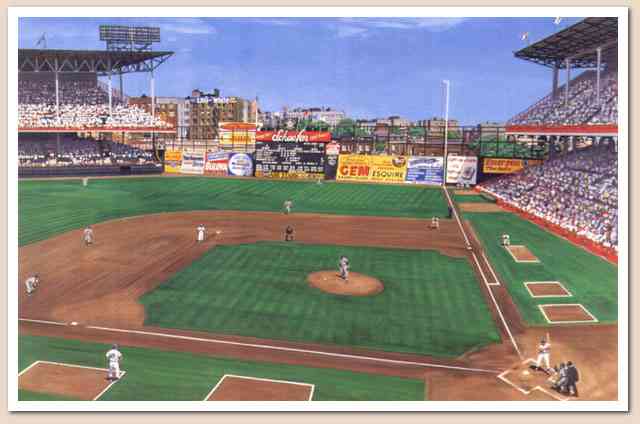 EBBETS FIELD: This jewelry-box ballfield on Flatbush Avenue was the stage on which so much of Brooklyn Dodgers history was played out, an intimate, almost wedge-shaped ballpark where a fan in the field level seats could tap a player in the On Deck Circle on the shoulder and ask him to autograph his scorecard. Seating about 32,000, Ebbets Field opened in 1913 and closed forever in 1960 as a wrecker’s ball—painted obscenely to look like a baseball—began smashing it to bits. Since its destruction, the ballpark has passed into legend. The current crop of newly-built ballparks all try to copy Ebbets Field, but they are all sad counterfeits that lack the magic of this original Field of Dreams.
EBBETS FIELD: This jewelry-box ballfield on Flatbush Avenue was the stage on which so much of Brooklyn Dodgers history was played out, an intimate, almost wedge-shaped ballpark where a fan in the field level seats could tap a player in the On Deck Circle on the shoulder and ask him to autograph his scorecard. Seating about 32,000, Ebbets Field opened in 1913 and closed forever in 1960 as a wrecker’s ball—painted obscenely to look like a baseball—began smashing it to bits. Since its destruction, the ballpark has passed into legend. The current crop of newly-built ballparks all try to copy Ebbets Field, but they are all sad counterfeits that lack the magic of this original Field of Dreams.
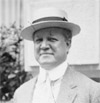 CHARLES EBBETS (1859-1925): Starting out as a ticket-taker, he eventually bought the team and built the ballpark that bore his name. When he bought the Dodgers he was offered a number of very lucrative deals to move the team to another city, but he refused, believing that the Dodgers were the common property of all Brooklynites and that he was merely the custodian of their trust. He was (in part) responsible for starting the famous feud and rivalry between the Dodgers and the New York Giants, when, after a personal disagreement with Giants owner John McGraw, Ebbets swore he “wouldn’t give McGraw the smoke off his tea.” McGraw felt likewise, and their mutual dislike colored both teams, a bitter rivalry that even transcended both teams’ removal to California. When Charley died, his heirs and the heirs of his partners fell into a disagreement over ownership and management of the team that lasted until they all sold out. Sadly, they ended up selling out to a group which included Walter O’Malley, who didn’t share Charley’s sense of loyalty to Brooklyn or to Dodger fans.
CHARLES EBBETS (1859-1925): Starting out as a ticket-taker, he eventually bought the team and built the ballpark that bore his name. When he bought the Dodgers he was offered a number of very lucrative deals to move the team to another city, but he refused, believing that the Dodgers were the common property of all Brooklynites and that he was merely the custodian of their trust. He was (in part) responsible for starting the famous feud and rivalry between the Dodgers and the New York Giants, when, after a personal disagreement with Giants owner John McGraw, Ebbets swore he “wouldn’t give McGraw the smoke off his tea.” McGraw felt likewise, and their mutual dislike colored both teams, a bitter rivalry that even transcended both teams’ removal to California. When Charley died, his heirs and the heirs of his partners fell into a disagreement over ownership and management of the team that lasted until they all sold out. Sadly, they ended up selling out to a group which included Walter O’Malley, who didn’t share Charley’s sense of loyalty to Brooklyn or to Dodger fans.
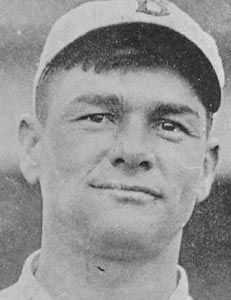 ZACK WHEAT (1888-1972): The Dodgers’ greatest hitter with 2,884 to his credit, Wheat began playing during the Dead Ball Era. Amazingly, he hit over .300 for 14 of his 19 seasons and finished his career with a .317 average. Just after Charles Ebbets’ death he was named to manage the Dodgers, but when owner Ed McKeever died less than two weeks later, Wilbert “Uncle Robbie” Robinson replaced him.
ZACK WHEAT (1888-1972): The Dodgers’ greatest hitter with 2,884 to his credit, Wheat began playing during the Dead Ball Era. Amazingly, he hit over .300 for 14 of his 19 seasons and finished his career with a .317 average. Just after Charles Ebbets’ death he was named to manage the Dodgers, but when owner Ed McKeever died less than two weeks later, Wilbert “Uncle Robbie” Robinson replaced him.
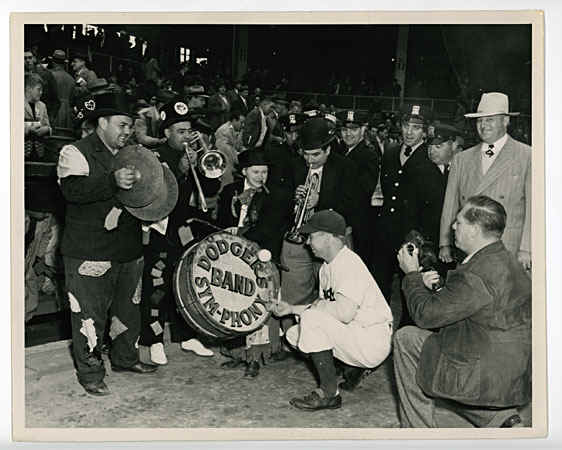 THE BROOKLYN DODGER SYM-PHONY: To call the Sym-Phony a group of dedicated amateur musicians would be to grant them a degree of musical competence many magnitudes above what actually existed. “They couldn’t hit a note,” said Don Newcombe. Maybe not, but these guys had a great deal of fun parading through the stands with their brass instruments and big bass drum, adding musical punctuation to every step (and misstep) on the field. “Three Blind Mice” was the theme song for the umpires, “The Worms Crawl In, The Worms Crawl Out” greeted struck out players as they returned to the dugout, and no matter how savvy the player, a big “ba-boom” greeted every player as his rump hit the bench. A totally spontaneous outgrowth of the madcap energy that effused Ebbets Field, the Sym-Phony drew the ire of the powerful Musicians’ Union , who accused owner Walter O’Malley of allowing non-union performers to entertain at Ebbets Field. To prove the point that anyone could play an instrument without being an “entertainer,” O’Malley , in a rare moment of business whimsy, announced “Music Depreciation Night,” and allowed any fan carrying an instrument to enter the park for free. Kazoos, whistles, ocarinas, jews’-harps, accordians, trumpets, drums, violins, upright basses, tubas and sousaphones, a woodwind section, and even two pianos set up a still-remembered caterwauling that night “to beat the band” or, more accurately, the Musicians’ Union. The union dropped the matter. The band played on.
THE BROOKLYN DODGER SYM-PHONY: To call the Sym-Phony a group of dedicated amateur musicians would be to grant them a degree of musical competence many magnitudes above what actually existed. “They couldn’t hit a note,” said Don Newcombe. Maybe not, but these guys had a great deal of fun parading through the stands with their brass instruments and big bass drum, adding musical punctuation to every step (and misstep) on the field. “Three Blind Mice” was the theme song for the umpires, “The Worms Crawl In, The Worms Crawl Out” greeted struck out players as they returned to the dugout, and no matter how savvy the player, a big “ba-boom” greeted every player as his rump hit the bench. A totally spontaneous outgrowth of the madcap energy that effused Ebbets Field, the Sym-Phony drew the ire of the powerful Musicians’ Union , who accused owner Walter O’Malley of allowing non-union performers to entertain at Ebbets Field. To prove the point that anyone could play an instrument without being an “entertainer,” O’Malley , in a rare moment of business whimsy, announced “Music Depreciation Night,” and allowed any fan carrying an instrument to enter the park for free. Kazoos, whistles, ocarinas, jews’-harps, accordians, trumpets, drums, violins, upright basses, tubas and sousaphones, a woodwind section, and even two pianos set up a still-remembered caterwauling that night “to beat the band” or, more accurately, the Musicians’ Union. The union dropped the matter. The band played on.
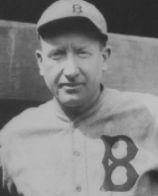 DAZZY VANCE (1891-1961): Vance was the brightest star in the Dodgers universe during the height of The Daffiness Boys Era, when Brooklyncouldn’t seem to do anything right. Following their loss to the Cleveland Indians in the 1920 World Series, the Dodgers suffered a twenty year collapse. Although individual players like Vance played phenomenal ball, the team as a whole was so bad that it was said (after a brief winning streak) that “overconfidence could cost the Dodgers seventh place,” and indeed, they hardly ever rose above sixth, a confirmed second division ballclub. Like Tom Seaver and the Mets 40 years later,Vance became ‘the franchise’. In his rookie year of 1922, he posted 18 wins and 12 losses with a 3.70 Earned Runs Average and a league-leading 134 strikeouts. His best season was 1924. He led the NL in wins (28), strikeouts (262) and ERA (2.16) and won the Triple Crown. He was named league MVP. Vance pitched a no-hitter in 1925. Vance led the National League in strikeouts for seven consecutive years (1922 – 1928), and retired with a 197-140 record, posting 2045 strikeouts and a 3.24 ERA overall.
DAZZY VANCE (1891-1961): Vance was the brightest star in the Dodgers universe during the height of The Daffiness Boys Era, when Brooklyncouldn’t seem to do anything right. Following their loss to the Cleveland Indians in the 1920 World Series, the Dodgers suffered a twenty year collapse. Although individual players like Vance played phenomenal ball, the team as a whole was so bad that it was said (after a brief winning streak) that “overconfidence could cost the Dodgers seventh place,” and indeed, they hardly ever rose above sixth, a confirmed second division ballclub. Like Tom Seaver and the Mets 40 years later,Vance became ‘the franchise’. In his rookie year of 1922, he posted 18 wins and 12 losses with a 3.70 Earned Runs Average and a league-leading 134 strikeouts. His best season was 1924. He led the NL in wins (28), strikeouts (262) and ERA (2.16) and won the Triple Crown. He was named league MVP. Vance pitched a no-hitter in 1925. Vance led the National League in strikeouts for seven consecutive years (1922 – 1928), and retired with a 197-140 record, posting 2045 strikeouts and a 3.24 ERA overall.
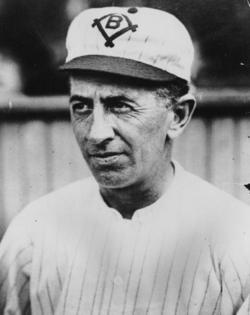 “WEE” WILLIE “HIT ‘EM WHERE THEY AIN’T” KEELER (1872-1923): Standing approximately 5’7″ (some sources say he was as short as 5’4″) and weighing 140 pounds, the Brooklyn-born Keeler was one of the smallest players ever to play professional baseball. He was also an impressive long ball and power hitter during the Dead Ball Era. His .385 career batting average is the highest batting average in history for a player with 1000 + (in Keeler’s case, 1147) hits . He hit over .300 16 times in 19 seasons, and hit over .400 once.
“WEE” WILLIE “HIT ‘EM WHERE THEY AIN’T” KEELER (1872-1923): Standing approximately 5’7″ (some sources say he was as short as 5’4″) and weighing 140 pounds, the Brooklyn-born Keeler was one of the smallest players ever to play professional baseball. He was also an impressive long ball and power hitter during the Dead Ball Era. His .385 career batting average is the highest batting average in history for a player with 1000 + (in Keeler’s case, 1147) hits . He hit over .300 16 times in 19 seasons, and hit over .400 once.
GOODDING (d. 1963): Was an Ebbets Field institution. Hired as an organist in 1942 to provide musical accompaniment at the games and to sing the National Anthem, Goodding’s voice was classically-trained. Her renditions of The Star Spangled Banner had a timeless quality. Even someone who has never heard of Goodding will instantly recognize the style. Goodding wrote the team’s theme song, Follow The Dodgers, which she played every time the team took the field.
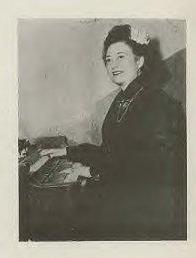
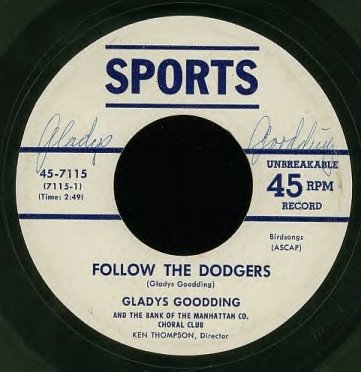
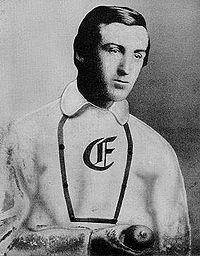 JIM CREIGHTON (1841-1862): After 1859, he played for the Brooklyn Excelsiors, one of the several teams that later converged to form the Dodgers in the 1880s. Creighton was baseball’s first superstar, credited with inventing the fastball. At age 21, Creighton died of an unknown abdominal complaint.
JIM CREIGHTON (1841-1862): After 1859, he played for the Brooklyn Excelsiors, one of the several teams that later converged to form the Dodgers in the 1880s. Creighton was baseball’s first superstar, credited with inventing the fastball. At age 21, Creighton died of an unknown abdominal complaint.
FLOYD CAVES “THE OTHER BABE” HERMAN (1903-1987): Babe Herman personified the spirit of The Daffiness Boys of the 1920s. Although Babe was a superb hitter, posting a .393 average, Herman was no competition for the Babe from the Bronx. His fielding was careless, and he led the league in errors in 1927. “He wore a glove because it was the custom,” Fresco Thompson said. Babe Herman scoffed at his own talent by saying, “If you see a guy and you think its me, throw some fly balls at him. If he catches them—It ain’t me.” At least twice he stopped on the basepaths to watch homers fly over the fence, costing the Dodgers an extra run. Herman claimed to have been bonked on the head by several fly balls (though he later admitted to exaggerating for effect). Once, while being interviewed he shocked the reporter by putting a lit cigar into his pants pocket without first extinguishing it. One gaffe that did become legendary resulted from his doubling into a double play. For some reason, he ended up at third with Dazzy Vance and Chick Fewster. All three men were tagged out. Sour Dodger fans never forgot the incident: “The Dodgers have three men on base! Yeah? Which base?”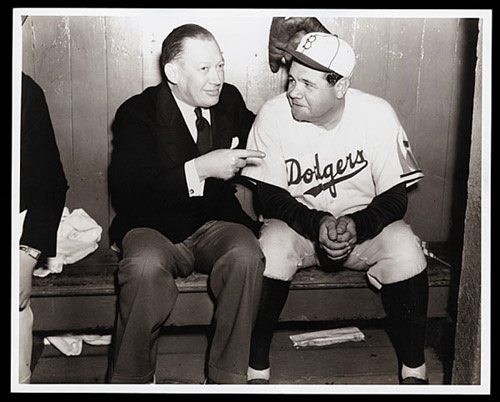

BABE RUTH (1895-1948): Babe Ruth? Babe Ruth was a Brooklyn Dodger? Yes folks, he sure was. Hired in 1938 by Larry MacPhail, Babe Ruth was a Dodger First Base coach, not a player. Although he had been tapped as a potential manager, even the legendarily alcoholic MacPhail grimaced at The Babe’s drinking habits, but even more so at his lack of dependability. The Babe came and went as he pleased, and sometimes never showed up for work at all. Ruth lasted only a single season in True Dodger Blue. But The Babe was a draw. Fans came to EbbetsField early for batting practice, hoping to see the Sultan of Swat do his thing. And he did. None of his Ebbets Field homers counted toward his record, but I’ve heard from those who were there that the rockets he sent over the wall toward Bedford Avenue always brought the fans to their feet cheering, and, even sometimes, gaping openmouthed.
Which brings us to . . .
LELAND STANFORD “LARRY” MACPHAIL (1890-1975): The Dodgers might never have become the Dodgers without Larry MacPhail. Impresario, executive, innovator, mean drunk, and madman, MacPhail brought baseball into the modern age by introducing night games to the sport, eschewing trains and using airplanes for team travel, breaking the “Gentleman’s Agreement” among the New York team owners not to radio broadcast games, had Dodger games broadcast on New York’s early experimental TV station W2XBS, spending money to upgrade Ebbets Field, spending money to buy top players. It’s said that Dodgers part-owner Steve McKeever died of a stroke after finding out that Larry paid Fifty Thousand Dollars for Dolph Camilli.
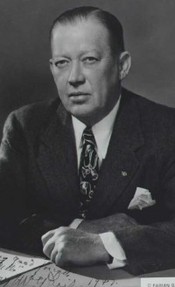
Some of Larry’s innovations went nowhere. Fans and players alike disliked the yellow baseballs he experimented with, and his glitzy satin night game uniforms looked good under the new lights at Ebbets Field, but were a bit too fey; today, they’re valuable collector’s items.
But some of his innovations were the stuff that remade the team. Bringing Red Barber to New York to be the on-air broadcaster changed the relationship of the fans and the team in a profound way, forming a bond that endures (in memory) to this day; spending money meant that more fans came to a more comfortable Ebbets Field to watch a team in serious contention. Larry was actually forced on the Dodgers’ recalcitrant owners by the Brooklyn Trust Company, to whom the team was over $1,000,000.00 in debt. In 1937, Ebbets Field, was crumbling due to neglect, and the local utility companies were threatening to turn off the water, lights and telephones in the stadium. The creditors demanded that the ownership resolve their decades-long internal squabbles, and that a new management team be appointed, subject to bank approval. The chastened owners appointed Larry. The Dodgers won their first Pennant in a generation, in 1941, but lost that year’s World Series to the Yankees in the first Subway Series.
MacPhail’s impact can be summed up simply by saying that in the 38 years before MacPhail, the Dodgers had won three pennants; in the 20 years following his arrival they won seven and lost in playoffs two times after finishing tied for first.
MacPhail was rancorous, particularly when he was drunk, which was often. According to Leo Durocher, “There is a thin line between genius and insanity, and in Larry’s case it was sometimes so thin you could see him drifting back and forth.” Leo would know. In his years as Field Manager under Larry, MacPhail fired Durocher at least 60 times. The blacked-out Larry frequently didn’t remember firing Durocher in the glare of a brain-frying “morning after,” and would fire him again for not showing up at the stadium on schedule.
Larry was seized with patriotic fervor after Pearl Harbor, and so he enlisted, selling his interest to Branch Rickey. He bought an interest in the Yankees after the war, but was bought out quickly. His histrionic behavior was less tolerable to the proper Bronx Bombersthan to the freewheeling Brooklyn Bums.
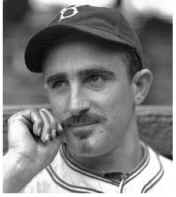 STANLEY GEORGE “FRENCHY” BORDAGARAY (1910-2001): Deserving of an Honorable Mention, Frenchy was a utility player who played for the Brooklyn Dodgers in 1936-37, and then again in the lean war years of 1942-1945. While Frenchy’s on-the-field abilities were colorless (he batted .283 and had 13 home runs over an eleven year career), he was famous as the only Major League player to sport a moustache between the late Nineteenth Century and the late Twentieth Century. He was also quite possibly the only ballplayer ever suspended for spitting on the field. When asked about his suspension, a bemused Frenchy said, “It was more than I expectorated.”
STANLEY GEORGE “FRENCHY” BORDAGARAY (1910-2001): Deserving of an Honorable Mention, Frenchy was a utility player who played for the Brooklyn Dodgers in 1936-37, and then again in the lean war years of 1942-1945. While Frenchy’s on-the-field abilities were colorless (he batted .283 and had 13 home runs over an eleven year career), he was famous as the only Major League player to sport a moustache between the late Nineteenth Century and the late Twentieth Century. He was also quite possibly the only ballplayer ever suspended for spitting on the field. When asked about his suspension, a bemused Frenchy said, “It was more than I expectorated.”
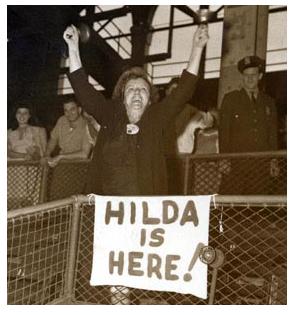 HILDA CHESTER (1897-1987): The most famous Dodger fan of all time was Hilda Chester, a large, loud, gravel-voiced, muu-muu clad woman with a mop of stringy hair. She first appeared at Ebbets Field in the 1920s, and by the 1930s she was one of hundreds of Ebbets Field regulars.
HILDA CHESTER (1897-1987): The most famous Dodger fan of all time was Hilda Chester, a large, loud, gravel-voiced, muu-muu clad woman with a mop of stringy hair. She first appeared at Ebbets Field in the 1920s, and by the 1930s she was one of hundreds of Ebbets Field regulars.
After suffering a heart attack in the early 1940s, her doctor dissuaded her from yelling at the games, so when she returned to Ebbets Field, she brought a frying pan and an iron ladle, making so much noise with them that she became an Ebbets Field attraction unto herself.
Well-known to all, she was even invited to travel with the team on short road trips. One day, after a particularly bad showing, she berated Duke Snider, who responded, “Hilda, why don’t you go home and shave?”
The Dodgers presented Hilda with the first of her famous cowbells in the 1930s. When she suffered a second heart attack in the mid-1940s, several of the players went to visit her in the hospital, including Leo Durocher, who became Hilda’s special hero. Her fondness for Durocher transcended even her fondness for the Dodgers, and after Durocher went to manage the Giants in 1948, she could be found at the Polo Grounds as well as at Ebbets Field.
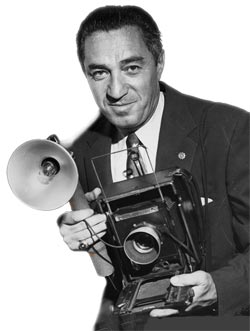 BARNEY STEIN (1908-1993): Barney Stein was an indefatigable photographer, always seeking the perfect picture. He once climbed the Triborough Bridge while it was under construction to take panoramic shots from the top of one of the towers. He photographed the famous, the not-so-famous, and the infamous. His cry, “Uno mas! One more!” was a familiar sound around Ebbets Field. Barney became the official Dodgers team photographer in 1937 and remained with the team until its move from Brooklyn in 1957. Afterward, he made a photographic record of the 1960 demise of Ebbets Field. A fine collection of his work for the Dodgers can be found in Through A Blue Lens.
BARNEY STEIN (1908-1993): Barney Stein was an indefatigable photographer, always seeking the perfect picture. He once climbed the Triborough Bridge while it was under construction to take panoramic shots from the top of one of the towers. He photographed the famous, the not-so-famous, and the infamous. His cry, “Uno mas! One more!” was a familiar sound around Ebbets Field. Barney became the official Dodgers team photographer in 1937 and remained with the team until its move from Brooklyn in 1957. Afterward, he made a photographic record of the 1960 demise of Ebbets Field. A fine collection of his work for the Dodgers can be found in Through A Blue Lens.
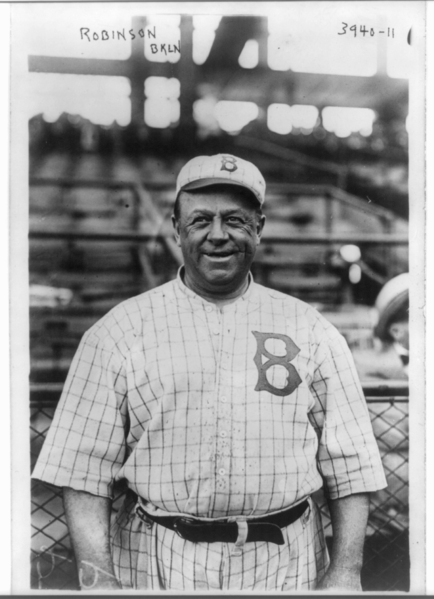 WILBERT ROBINSON (1863-1934): Eighteen seasons (1914-1931) as the Dodgers’ field manager earned Robinson the fond nickname of “Uncle Robbie” and the team he managed acquired the alternate name of “Robins” (his immediate successor was Max Canaris, and the sportswriters started calling the team the “Canaries,” but it didn’t catch on and neither did Canaris). Uncle Robbie has the distinction of winning more Dodger games ( 1,375 ) than any other manager in the team’s history. Not only was he the field manager, but he was also (briefly) the general manager and (even more briefly) the President of the Dodger organization, as a compromise candidate between the Ebbets heirs and the McKeever heirs. Uncle Robbie brought the team to two World Series, but he also oversaw the team’s near collapse in the 1920s. During the Daffy Dodger days Uncle Robbie barely managed to manage. Things became so dark that he created a “Boneheads Club,” a Dodger version of the stocks, to which any goofy player would be elected. Robbie immediately became the first member and President of the Boneheads, when he entrained the team and arrived for a scheduled road game a day early. Trying to set some kind of bizarre record, he attempted to catch a baseball dropped from an airplane, but was surprised by a practical joke when a grapefruit splattered over his head. Though he was generally unlucky with his team, he did groom an excellent pitching staff, including Dazzy Vance and Burleigh Grimes. Despite (or perhaps because of) the Daffiness Boys’ dismal record, the team became the beloved “Brooklyn Bums” on his watch. When Uncle Robbie died, he was profoundly mourned by all baseball-crazy Brooklynites.
WILBERT ROBINSON (1863-1934): Eighteen seasons (1914-1931) as the Dodgers’ field manager earned Robinson the fond nickname of “Uncle Robbie” and the team he managed acquired the alternate name of “Robins” (his immediate successor was Max Canaris, and the sportswriters started calling the team the “Canaries,” but it didn’t catch on and neither did Canaris). Uncle Robbie has the distinction of winning more Dodger games ( 1,375 ) than any other manager in the team’s history. Not only was he the field manager, but he was also (briefly) the general manager and (even more briefly) the President of the Dodger organization, as a compromise candidate between the Ebbets heirs and the McKeever heirs. Uncle Robbie brought the team to two World Series, but he also oversaw the team’s near collapse in the 1920s. During the Daffy Dodger days Uncle Robbie barely managed to manage. Things became so dark that he created a “Boneheads Club,” a Dodger version of the stocks, to which any goofy player would be elected. Robbie immediately became the first member and President of the Boneheads, when he entrained the team and arrived for a scheduled road game a day early. Trying to set some kind of bizarre record, he attempted to catch a baseball dropped from an airplane, but was surprised by a practical joke when a grapefruit splattered over his head. Though he was generally unlucky with his team, he did groom an excellent pitching staff, including Dazzy Vance and Burleigh Grimes. Despite (or perhaps because of) the Daffiness Boys’ dismal record, the team became the beloved “Brooklyn Bums” on his watch. When Uncle Robbie died, he was profoundly mourned by all baseball-crazy Brooklynites.
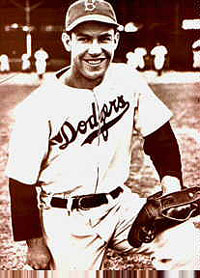 “PISTOL” PETE REISER (1919-1981): Widely considered one of the finest all-around baseball players ever, Reiser was an on-field sensation who played with an aggressive, almost suicidal, style. He fractured his skull running into the outfield wall on one occasion (but still made the throw back to the infield), was temporarily paralyzed on another and was taken off the field on a stretcher many times. On one occasion Pete was given his Last Rites in the ballpark. Leo Durocher, who was Pete’s first Major League manager, reflected many years later that in terms of talent, skill, and potential, there was only one other player comparable to Pete Reiser, and that was Willie Mays: “Willie Mays had everything. Pete Reiser had everything but luck.” Pete’s professional career lasted only twelve years, and was constantly interrupted by injuries. The Dodgers created the first purpose-built warning track to help Pete protect himself, but Pete disregarded it. Eventually, the Dodgers padded the walls, but Reiser’s career had gone into eclipse by then. Repeated closed head injuries affected his vision and his coordination, prematurely ending what might have been a stellar career.
“PISTOL” PETE REISER (1919-1981): Widely considered one of the finest all-around baseball players ever, Reiser was an on-field sensation who played with an aggressive, almost suicidal, style. He fractured his skull running into the outfield wall on one occasion (but still made the throw back to the infield), was temporarily paralyzed on another and was taken off the field on a stretcher many times. On one occasion Pete was given his Last Rites in the ballpark. Leo Durocher, who was Pete’s first Major League manager, reflected many years later that in terms of talent, skill, and potential, there was only one other player comparable to Pete Reiser, and that was Willie Mays: “Willie Mays had everything. Pete Reiser had everything but luck.” Pete’s professional career lasted only twelve years, and was constantly interrupted by injuries. The Dodgers created the first purpose-built warning track to help Pete protect himself, but Pete disregarded it. Eventually, the Dodgers padded the walls, but Reiser’s career had gone into eclipse by then. Repeated closed head injuries affected his vision and his coordination, prematurely ending what might have been a stellar career.
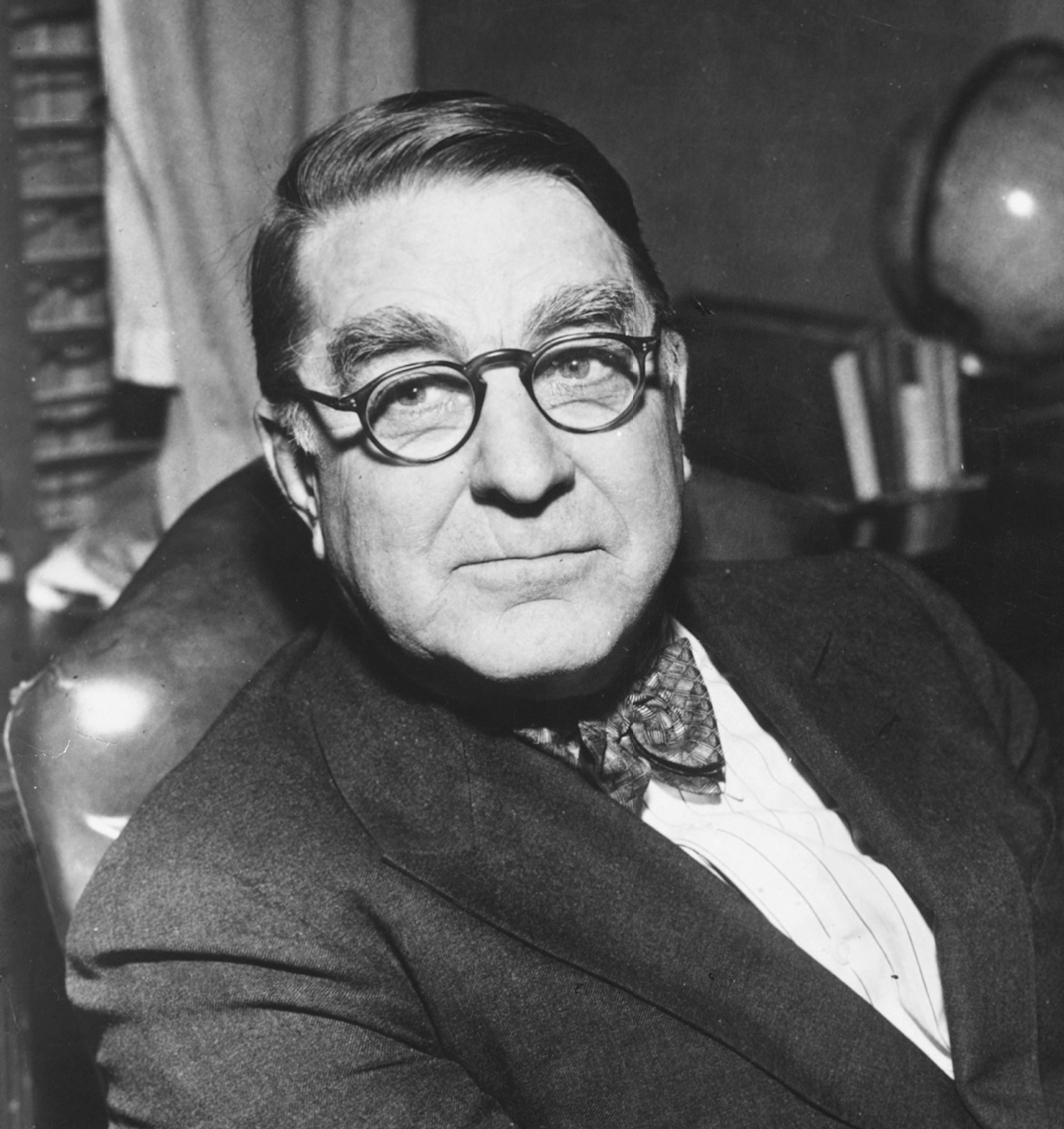 WESLEY BRANCH RICKEY (1881-1965): Branch Rickey was a teetotaling and religious Methodist who never came to games on Sundays. Sometimes hortatory and sometimes insufferably self-righteous, he was also a noted raconteur and a human being dedicated to fairness and justice. He took the helm from Larry MacPhail, and became a part owner of the team. As Brooklyn Dodger General Manager from 1941 to 1950, he came to know a wide variety of human beings, reprobates and reformers both. Branch Rickey invented the modern farm system in baseball. He founded Dodgertown in Vero Beach, Florida, as a dedicated training facility for both raw young talent and established players. It was said of Rickey that he had the singular ability of being able to assess the strengths and weaknesses of Minor Leaguers, talent and physique both, by observation, and to make amazingly accurate predictions as to the arc of a player’s career. He is, of course, best known as the man who signed Jackie Robinson and broke the color barrier in Major League baseball, but he was also responsible for signing all the stalwarts who became known collectively as “The Boys of Summer.”
WESLEY BRANCH RICKEY (1881-1965): Branch Rickey was a teetotaling and religious Methodist who never came to games on Sundays. Sometimes hortatory and sometimes insufferably self-righteous, he was also a noted raconteur and a human being dedicated to fairness and justice. He took the helm from Larry MacPhail, and became a part owner of the team. As Brooklyn Dodger General Manager from 1941 to 1950, he came to know a wide variety of human beings, reprobates and reformers both. Branch Rickey invented the modern farm system in baseball. He founded Dodgertown in Vero Beach, Florida, as a dedicated training facility for both raw young talent and established players. It was said of Rickey that he had the singular ability of being able to assess the strengths and weaknesses of Minor Leaguers, talent and physique both, by observation, and to make amazingly accurate predictions as to the arc of a player’s career. He is, of course, best known as the man who signed Jackie Robinson and broke the color barrier in Major League baseball, but he was also responsible for signing all the stalwarts who became known collectively as “The Boys of Summer.”
“Thou shalt not steal. I mean defensively. On offense, indeed thou shall steal and thou must.”
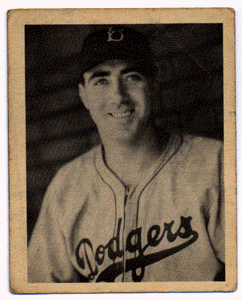 VAN LINGLE MUNGO (1911-1985): Played for the Dodgers from 1931 to 1941. Today, Van Lingle Mungo is famed primarily for his euphonious name. Prior to an arm injury that stalled his career, Van Lingle Mungo averaged 16 wins per season and led the National League in strikeouts (236) in 1936. Van Lingle Mungo was a ladies’ man and once had to be smuggled out of a hotel hidden in a laundry cart to avoid being shot by an outraged husband. Given that there’ll probably never be another Van Lingle Mungo in baseball (or anyplace else), he deserves an Honorable Mention.
VAN LINGLE MUNGO (1911-1985): Played for the Dodgers from 1931 to 1941. Today, Van Lingle Mungo is famed primarily for his euphonious name. Prior to an arm injury that stalled his career, Van Lingle Mungo averaged 16 wins per season and led the National League in strikeouts (236) in 1936. Van Lingle Mungo was a ladies’ man and once had to be smuggled out of a hotel hidden in a laundry cart to avoid being shot by an outraged husband. Given that there’ll probably never be another Van Lingle Mungo in baseball (or anyplace else), he deserves an Honorable Mention.
LEO “THE LIP” DUROCHER (1905-1991): Leo was notorious. When he was a Yankee, the man once stole Babe Ruth’s watch, an act of larceny which would have earned him a small footnote in baseball history, whatever else he ever did. Leo, however, was marked out for even greater infamy. He routinely passed bad checks to cover his gambling debts, associated with known mobsters, seduced Hollywood stars and starlets (including his wife, Laraine Day, who was married to someone else when she married him), and was responsible for bringing the staid world of baseball into contact with the glitzy world of Hollywood, an association from which the game has never recovered. Foul-mouthed and volatile, Durocher was routinely ejected (95 times!) from games for swearing at or threatening the umpires. Aside from all the drama, Leo was a talented manager who demanded the best from his players and got it. He greeted the announcement of (and the objections to) Jackie Robinson’s appointment to the Dodgers with the immortal words, “I don’t care if he’s black. I don’t care if he’s yellow. I don’t care if he’s a #&@! zebra. I’m the manager of this team and if I say he plays, he plays!” Leo, however, didn’t get to oversee Jackie’s first, difficult, year (this might not have been a bad thing, in retrospect!) as he was suspended from the game for the 1947 season, “for conduct detrimental to baseball.” Baseball Commissioner Happy Chandler bowed to pressure from Larry MacPhail (who then owned the Yankees, and probably owed Leo for gambling debts), and the powerful hierarchy of the New York Diocese of the Catholic Church, who found Leo’s behavior, particularly his sinful marriage, threatening to the morals of Catholic youth. Leo returned to manage the Dodgers in 1948, but then committed the truly mortal sin of traveling uptown in 1949 to manage the Giants. Now, that’s just wrong.
Durocher with his wife, actress Laraine Day; Durocher discovers the ultimate power hitter in Herman Munster; Leo The Lip at work doing what he done best; Leo in living color.
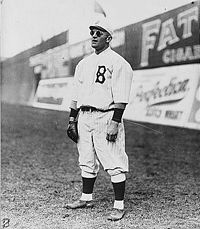 CASEY “THE OLD PROFESSOR” STENGEL (1890-1975): Stengel is remembered chiefly for bringing the Yankees to five consecutive World Championships, mostly against the Dodgers, and his management of the Mets (“Does anybody here know how to play baseball?”), and for his “Stengelese”—“Never make predictions, especially about the future,” and “Son, we’d like to keep you around this season but we’re going to try and win a pennant,” and “There comes a time in every man’s life, and I’ve had plenty of them,” are just three of his colorful quotes. Nonetheless, Casey (then “K.C.” for his hometown of Kansas City), began his career as a player for the Dodgers (1912-1917). He wasn’t a remarkable player by any stretch, but he was popular for keeping the crowds entertained. Once, he doffed his cap to the crowd as he took up his batting stance, allowing a captive bird to fly off his head. It’s said that he convinced the pilot to substitute a grapefruit for a baseball when Wilbert Robinson tried to make a catch dropped from an overflying plane. Casey might have saved Uncle Robbie’s life. The grapefruit hit him in the head, which splattered the grapefruit. Had it been a baseball it might have splattered Robinson’s brains. Although Stengel worked to defeat the Dodgers, he was fond of recalling his Dodger playing days: “Sure I played. Did you think I was born at the age of 70 sitting in a dugout trying to manage guys like you.”
CASEY “THE OLD PROFESSOR” STENGEL (1890-1975): Stengel is remembered chiefly for bringing the Yankees to five consecutive World Championships, mostly against the Dodgers, and his management of the Mets (“Does anybody here know how to play baseball?”), and for his “Stengelese”—“Never make predictions, especially about the future,” and “Son, we’d like to keep you around this season but we’re going to try and win a pennant,” and “There comes a time in every man’s life, and I’ve had plenty of them,” are just three of his colorful quotes. Nonetheless, Casey (then “K.C.” for his hometown of Kansas City), began his career as a player for the Dodgers (1912-1917). He wasn’t a remarkable player by any stretch, but he was popular for keeping the crowds entertained. Once, he doffed his cap to the crowd as he took up his batting stance, allowing a captive bird to fly off his head. It’s said that he convinced the pilot to substitute a grapefruit for a baseball when Wilbert Robinson tried to make a catch dropped from an overflying plane. Casey might have saved Uncle Robbie’s life. The grapefruit hit him in the head, which splattered the grapefruit. Had it been a baseball it might have splattered Robinson’s brains. Although Stengel worked to defeat the Dodgers, he was fond of recalling his Dodger playing days: “Sure I played. Did you think I was born at the age of 70 sitting in a dugout trying to manage guys like you.”
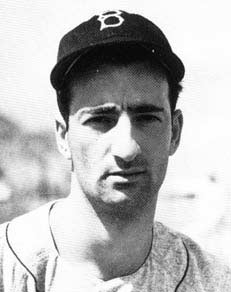 CAL ABRAMS (1924-1997): Cal, who played for the Dodgers from 1949 to 1952 was one of the supporting players during the great era of The Boys of Summer. Cal is famous mostly for losing a Pennant, but it wasn’t his fault. In 1950 the Dodgers tied for the Pennant, and faced the Philadelphia Phillies in a single-game playoff to determine who would represent the National League in that year’s World Series. In the bottom of the 9th inning, with nobody out and the game tied 1-1, Abrams was on second base when Duke Snider hit a single to short center field. Abrams was waved home by third base coach Milt Stock. Abrams, who was not noted for his speed, was out at the plate by a mile on a perfect throw by Phillies center fielder Richie Ashburn, who had fielded the ball on one bounce. The play resulted in the preservation of the 1-1 tie. Dick Sisler’s 10th inning home run ended the Dodgers’ hopes for that season. Stock was fired after the season for his decision to wave Abrams home.
CAL ABRAMS (1924-1997): Cal, who played for the Dodgers from 1949 to 1952 was one of the supporting players during the great era of The Boys of Summer. Cal is famous mostly for losing a Pennant, but it wasn’t his fault. In 1950 the Dodgers tied for the Pennant, and faced the Philadelphia Phillies in a single-game playoff to determine who would represent the National League in that year’s World Series. In the bottom of the 9th inning, with nobody out and the game tied 1-1, Abrams was on second base when Duke Snider hit a single to short center field. Abrams was waved home by third base coach Milt Stock. Abrams, who was not noted for his speed, was out at the plate by a mile on a perfect throw by Phillies center fielder Richie Ashburn, who had fielded the ball on one bounce. The play resulted in the preservation of the 1-1 tie. Dick Sisler’s 10th inning home run ended the Dodgers’ hopes for that season. Stock was fired after the season for his decision to wave Abrams home.
Abrams befriended Jackie Robinson. Cal was sensitive to instances of racism, and particularly anti-Semitism of which there were many in professional baseball at that time. Jewish players were routinely called “Abie” or “Moses,” and were sometimes subjected to humiliating treatment. Dodger manager Charlie Dressen refused to let him play on “Cal Abrams Day” at Ebbets Field in 1951. In 1952, he was traded away. The story is told that Dressen ordered Cal to bench jockey Reds manager Rogers Hornsby. Cal then needled, insulted and mocked Hornsby throughout the entire game, enraging him. During the break between the first and second games, Abrams was told he had been traded—to the Reds.
Abrams considered his time with the Dodgers to be the most meaningful of his baseball career and loved the team. When he died in Florida in 1997 he was buried in his Brooklyn Dodgers uniform.
 RED BARBER (1908-1992): Walter Lanier “Red” Barber was born in Mississippi, and though he broadcast games for the Brooklyn Dodgers from 1939 to 1953, never lost the distinctive Southern drawl which became his trademark. Barber broadcast the sport’s first televised contest on August 26, 1939 in Brooklyn.
RED BARBER (1908-1992): Walter Lanier “Red” Barber was born in Mississippi, and though he broadcast games for the Brooklyn Dodgers from 1939 to 1953, never lost the distinctive Southern drawl which became his trademark. Barber broadcast the sport’s first televised contest on August 26, 1939 in Brooklyn.
“The Ole Redhead” was known for his warm, honey-slow and folksy delivery, and brought many country colloquialisms to the lips of Brooklynites. The Dodgers were “in the catbird seat” when they were winning; baseball arguments and bench-clearing incidents were “rhubarbs;” Ebbets Field was “the rhubarb patch;” a close game could be “tighter than a new pair of shoes on a rainy day,” but by contrast, a team with an overwhelming lead would have the game “tied up in a croker sack.” Barber was also literate: He could describe a stranded runner by saying that his teammates had “left him languishing there like the Prisoner of Chillion,” referencing a poem by Lord Byron.
After Red Barber moved on sixty years ago in 1949 he was replaced by Vin Scully who still calls games for Los Angeles.
A Brooklyn fan out walking in the summer streets didn’t need a radio since he could hear Barber’s running commentary as he passed every open window on the street, “the voice of the Brooklyn Dodgers.”
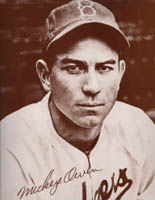 MICKEY OWEN (1916-2005): Like Cal Abrams, Mickey is remembered for a classic Dodgers disaster. More than likely, it might have cost the Dodgers the 1941 World Series. Although the mistake did not come in the deciding game, its psychological impact on the team undoubtedly affected them. The Bums were playing the Yankees (for the first, but not, oh no, not for the last time). During the 1941 season, Owen had set a record for most errorless fielding chances by a catcher with 508 perfect attempts and finished with a .995 average. The near-flawless Owen earned his place in baseball lore for the costly passed ball that came in the 9th inning of Game Four of the ’41 World Series. The Yankees held a 2-games-to-1 lead entering Game 4 at the Dodgers’ home field, Ebbets Field, but with 2 outs in the top of the ninth inning and the count 3-2 on the Yankee’s Tommy Henrich the Dodgers led 4-3. Henrich swung and missed at strike 3 which would have been the final out, but Owen muffed the catch for the only error of the game. Henrich made it safely to first base. The heart of the Yankee order, including DiMaggio, then went on to rally to score four runs in that inning and held on to win the game 7-4. Instead of the series being even at 2-2 the victory gave the Yankees a 3-1 lead in the series and, the next day, New York beat the Dodgers 3-1 in Game 5 and won the World Championship.
MICKEY OWEN (1916-2005): Like Cal Abrams, Mickey is remembered for a classic Dodgers disaster. More than likely, it might have cost the Dodgers the 1941 World Series. Although the mistake did not come in the deciding game, its psychological impact on the team undoubtedly affected them. The Bums were playing the Yankees (for the first, but not, oh no, not for the last time). During the 1941 season, Owen had set a record for most errorless fielding chances by a catcher with 508 perfect attempts and finished with a .995 average. The near-flawless Owen earned his place in baseball lore for the costly passed ball that came in the 9th inning of Game Four of the ’41 World Series. The Yankees held a 2-games-to-1 lead entering Game 4 at the Dodgers’ home field, Ebbets Field, but with 2 outs in the top of the ninth inning and the count 3-2 on the Yankee’s Tommy Henrich the Dodgers led 4-3. Henrich swung and missed at strike 3 which would have been the final out, but Owen muffed the catch for the only error of the game. Henrich made it safely to first base. The heart of the Yankee order, including DiMaggio, then went on to rally to score four runs in that inning and held on to win the game 7-4. Instead of the series being even at 2-2 the victory gave the Yankees a 3-1 lead in the series and, the next day, New York beat the Dodgers 3-1 in Game 5 and won the World Championship.
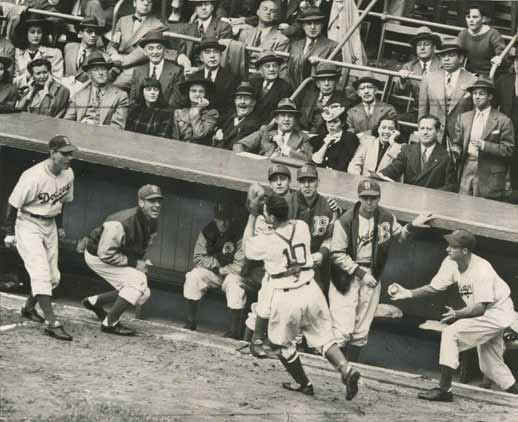
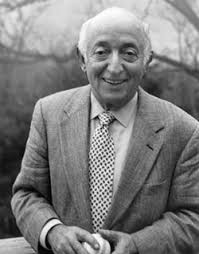 ROGER KAHN: Born in 1927, Roger is famous for his sportswriting on behalf of various publications, but he gained a measure of immortality with his semi-autobiographical The Boys of Summer. The title was lifted from Dylan Thomas’ famous poem, but Roger made it more famous, and linked the Dodgers with it forever by using it to refer to the heart of the 1950s Dodger lineup. The nickname has passed into regular English usage to refer to the Brooklyn Dodgers in general. Roger also wrote The Era—1947-1957 discussing the Yankees and Dodgers and Giants shared dominance of baseball during those eleven seasons.
ROGER KAHN: Born in 1927, Roger is famous for his sportswriting on behalf of various publications, but he gained a measure of immortality with his semi-autobiographical The Boys of Summer. The title was lifted from Dylan Thomas’ famous poem, but Roger made it more famous, and linked the Dodgers with it forever by using it to refer to the heart of the 1950s Dodger lineup. The nickname has passed into regular English usage to refer to the Brooklyn Dodgers in general. Roger also wrote The Era—1947-1957 discussing the Yankees and Dodgers and Giants shared dominance of baseball during those eleven seasons.
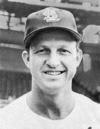 STAN “THE MAN” MUSIAL (b. 1920): Although Stan Musial was never a Dodger, I include him here out of respect. Not only was Musial one of the finest players the game has ever seen, and not only was he warmly regarded by all, but THE MAN owned Ebbets Field—and I mean owned it. Stan’s average inside the Pea Patch was an incredible .536!
STAN “THE MAN” MUSIAL (b. 1920): Although Stan Musial was never a Dodger, I include him here out of respect. Not only was Musial one of the finest players the game has ever seen, and not only was he warmly regarded by all, but THE MAN owned Ebbets Field—and I mean owned it. Stan’s average inside the Pea Patch was an incredible .536!
By the way, he got his nickname in Brooklyn. Brooklyn fans, a raucous bunch at the best of times, never booed THE MAN. Instead, they seemed to regard him with a kind of respectful awe as he stepped from the dugout: “Here comes THE MAN again!” And he was always “THE MAN” never “that man.” He’ll always be THE MAN. RALPH BRANCA AND BOBBY THOMSON AND THE SHOT HEARD ‘ROUND THE WORLD: Two men linked together by fate: The talented but unspectacular Brooklyn Dodgers pitcher Ralph Branca threw a baseball at the talented but unspectacular New York Giants outfielder Bobby Thomson at 3:58 PM on October 3, 1951, a dark and gloomy day for baseball at the Giants’ Polo Grounds in upper Manhattan.
The two National League teams were the vilest of rivals and enemies, and had been so since the earliest days of the Twentieth Century. The Dodgers had squandered a 13.5 game lead and the Giants had won 36 of their last 42 games to bring the season down to a three game playoff series, split between the two teams.
In the bottom of the Ninth, the Dodgers were ahead 4-1, when things unravelled for the hapless Bums. The Giants scored on a ball that sneaked through the shallow infield. The tiring Dodger ace, Big Don Newcombe, found himself facing two Giants on base and one out.
Manager Charlie Dressen decided Newk had had it, and sent Branca up against Thomson. Dodger fans shuddered, remembering that Thomson had homered off Branca two days previously. What nobody knew was that the Giants, who had been floundering badly and then came alive late in the season, had a telescope trained on home plate and had been stealing signs for months, courtesy of their manager, the Benedict Arnold of Brooklyn, Leo Durocher. Did they steal the sign on this pitch? Who knows?
On Branca’s second pitch, Thomson connected with a spectacular shot that rocketed into the stands, shattering the Dodgers’ season, taking the pennant, and making himself one half the instrument of the most famous moment in baseball. In the picture above, Jackie Robinson, with his back to the camera, is in a posture of complete disbelief.
The crack of that bat reverberated all the way around the world, thanks to the first “live feed” cross-country television cable and thanks to Armed Forces Radio, where it momentarily drowned out the Korean War. There are famous photographs of Branca weeping. There are famous photographs of Thomson kissing his bat. It is said that suicide lines formed on the Brooklyn Bridge. Branca was hanged in effigy. To this day, there are still those who curse him.
Fortunately, Thomson and Branca are fine men who have managed to prolong their shared moment into a lifetime friendship, and goodnatured fellowship.
Yes, it was a sad moment for Brooklyn Dodger fans, but it was another chapter in the wonderful odyssey that is Brooklyn baseball.
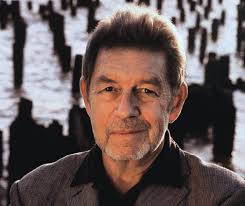 PETE HAMILL: Pete Hamill is a novelist, essayist and journalist whose career has endured for more than forty years. He was born in Brooklyn in 1935. He has been a columnist for the New York Post, the New York Daily News, and New York Newsday, the Village Voice, New York magazine and Esquire. He has served as editor-in-chief of both the Post and the Daily News.
PETE HAMILL: Pete Hamill is a novelist, essayist and journalist whose career has endured for more than forty years. He was born in Brooklyn in 1935. He has been a columnist for the New York Post, the New York Daily News, and New York Newsday, the Village Voice, New York magazine and Esquire. He has served as editor-in-chief of both the Post and the Daily News.
Pete’s Dodger connection is visceral. As a youngster and a young man he was imbued by his family with a love of Brooklyn baseball. It was Pete and Jack Newfield who each wrote their own list of the three worst villains of the 20th century on a piece of paper to settle a discussion they were having over lunch. They wrote the same three names in the same order: Hitler, Stalin, Walter O’Malley. On December 4, 2007, Pete reacted to the election of O’Malley to the Baseball Hall of Fame in a Daily News column by speaking plainly about what the Dodgers had meant to Brooklyn, what had been lost when they left, and the role O’Malley played. It can all be summed up in his one phrase: “Never forgive. Never forget.”
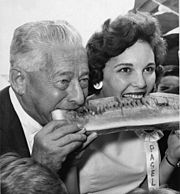 ABE STARK (1893-1972): Abe started out as a tailor and haberdasher with a store at 1514 Pitkin Avenue. Next to Harry Truman, he may be the most famous haberdasher/politician in the world, for Abe advertised at Ebbets Field. His sign, right under the scoreboard, said, “Hit Sign. Win Suit.” It was not an easy challenge. The sign was low to the ground, very narrow, and placed at an odd angle to home plate. “Hit Sign. Win Suit.” became world famous through newsreels and then television, and so did Abe, who eventually became Brooklyn Borough President and then City Council President. As part of his legacy to Brooklyn he helped found the Brownsville Boys Club, which yours truly attended as a preschool. Most stadiums have adopted some variation on Abe’s marketing plan to pique fan interest. And, oh yeah, only a few suits ever had to be given away over the years. It pays to advertise.
ABE STARK (1893-1972): Abe started out as a tailor and haberdasher with a store at 1514 Pitkin Avenue. Next to Harry Truman, he may be the most famous haberdasher/politician in the world, for Abe advertised at Ebbets Field. His sign, right under the scoreboard, said, “Hit Sign. Win Suit.” It was not an easy challenge. The sign was low to the ground, very narrow, and placed at an odd angle to home plate. “Hit Sign. Win Suit.” became world famous through newsreels and then television, and so did Abe, who eventually became Brooklyn Borough President and then City Council President. As part of his legacy to Brooklyn he helped found the Brownsville Boys Club, which yours truly attended as a preschool. Most stadiums have adopted some variation on Abe’s marketing plan to pique fan interest. And, oh yeah, only a few suits ever had to be given away over the years. It pays to advertise.
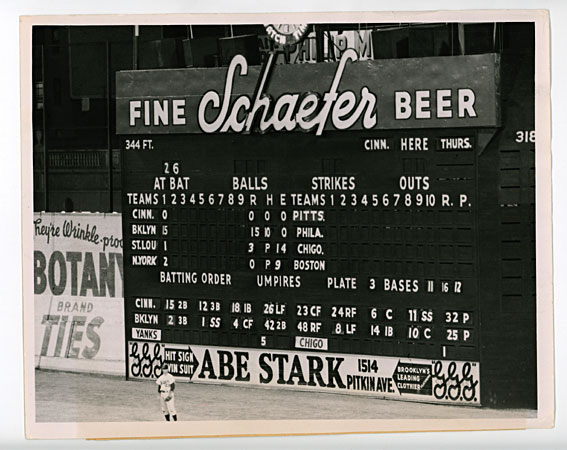
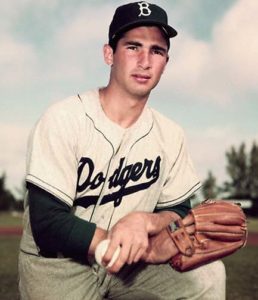
SANDY KOUFAX: Sandy, Brooklyn-born and Brooklyn-raised was a member of the 1955 Brooklyn Dodgers World Championship team. He is, arguably (though you’d get no argument from me), the greatest pitcher in baseball history. And even though his great years came after the Brooklyn Dodgers were gone, he deserves a spot on this list. You gonna argue with me? Don’t even think about it, okay? I’m from BROOKLYN!
WILLARD MULLIN (1902-1978): Willard was a well-known and widely-published sports cartoonist who invented the Brooklyn Bum. Supposedly, the idea came to him during a taxi ride when the cabbie asked, “How’s dem bums doin’ today?” In Brooklyn, there was no question who he meant.
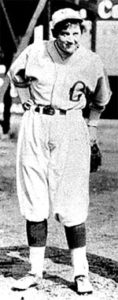 JACKIE MITCHELL (1914-1987): Mitchell was taught to pitch by her neighbor, Dazzy Vance. As a female pitcher, Virne Beatrice Mitchell was another Dodgers “first.” Although Jackie never got a chance to play for the big club itself, she is renowned as “The Girl Who Struck Out Babe Ruth.” On April 2, 1931, when Jackie was just seventeen, the Yankees played an exhibition game against the Dodgers’ AA Minor League farm club, the Chattanooga Lookouts, with Jackie on the mound. Jackie struck out The Babe on four pitches (a ball and three strikes); she then immediately faced Lou Gehrig, who went down after three called strikes (nonetheless, the Yankees won, 14-4). The New York Times duly noted the accomplishment (and also reported that the “Robins” had lost to the Yankees’ AAA Hartford affiliate 5-2 that same day). Having awed all of professional baseball by striking out two of its greatest players on seven pitches, Jackie was rewarded by Commissioner Kennesaw Mountain Landis by having her contract voided, essentially banning her from playing pro ball ever again.
JACKIE MITCHELL (1914-1987): Mitchell was taught to pitch by her neighbor, Dazzy Vance. As a female pitcher, Virne Beatrice Mitchell was another Dodgers “first.” Although Jackie never got a chance to play for the big club itself, she is renowned as “The Girl Who Struck Out Babe Ruth.” On April 2, 1931, when Jackie was just seventeen, the Yankees played an exhibition game against the Dodgers’ AA Minor League farm club, the Chattanooga Lookouts, with Jackie on the mound. Jackie struck out The Babe on four pitches (a ball and three strikes); she then immediately faced Lou Gehrig, who went down after three called strikes (nonetheless, the Yankees won, 14-4). The New York Times duly noted the accomplishment (and also reported that the “Robins” had lost to the Yankees’ AAA Hartford affiliate 5-2 that same day). Having awed all of professional baseball by striking out two of its greatest players on seven pitches, Jackie was rewarded by Commissioner Kennesaw Mountain Landis by having her contract voided, essentially banning her from playing pro ball ever again.
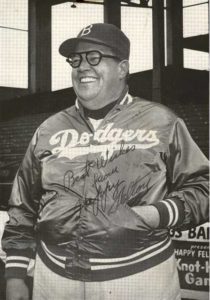 HAPPY FELTON (1907-1964): No one is absolutely certain what Happy Felton’s real name was. A successful bandleader and musician in the 1930s, Felton changed his name several times throughout the years. Though he was always known as a supremely jovial man, Felton was profoundly unhappy much of the time, developing an eating disorder that ended his life prematurely. In the 1950s, Happy Felton had a pre-game show at Ebbets Field called Happy Felton’s Knot Hole Gang. The show aired about a half hour before game time. Three Little Leaguers would appear on each show, along with a Dodger who would work them out and decide who among them was the better player. The winner could get to come back the next day and talk to the player of his choice just before the game started. Happy Felton also had a post-game show, Talk to the Stars. He would interview the two top players of the day. Suggested questions were sent in by fans, and Happy and his staff would choose a fan question for each show. The participating players would receive $50.00 for appearing on either the pre-game show or post-game show. Pee Wee Reese appeared so many times that the Dodgers joked that he was still cashing checks into his eighties!
HAPPY FELTON (1907-1964): No one is absolutely certain what Happy Felton’s real name was. A successful bandleader and musician in the 1930s, Felton changed his name several times throughout the years. Though he was always known as a supremely jovial man, Felton was profoundly unhappy much of the time, developing an eating disorder that ended his life prematurely. In the 1950s, Happy Felton had a pre-game show at Ebbets Field called Happy Felton’s Knot Hole Gang. The show aired about a half hour before game time. Three Little Leaguers would appear on each show, along with a Dodger who would work them out and decide who among them was the better player. The winner could get to come back the next day and talk to the player of his choice just before the game started. Happy Felton also had a post-game show, Talk to the Stars. He would interview the two top players of the day. Suggested questions were sent in by fans, and Happy and his staff would choose a fan question for each show. The participating players would receive $50.00 for appearing on either the pre-game show or post-game show. Pee Wee Reese appeared so many times that the Dodgers joked that he was still cashing checks into his eighties!
THE BOYS OF SUMMER
One of the things that made the Dodgers such an effective team was the deep sense of cohesion shared between the men on the field, a sense that extended into the stands at Ebbets Field, and on into the streets of Brooklyn, and beyond. No other team has ever had the bond that Dem Bums had with Brooklyn, and a lot of it started right on that impossibly green diamond. Unlike modern baseball, where obscene amounts of money and free agency have utterly changed the tenor of the game, baseball as played by the Boys of Summer had a quality of purity. They certainly didn’t play for the money. Jackie Robinson made the league minimum of $5,000.00 for the season when he came to Brooklyn in 1947. Don Zimmer’s original salary was $140.00 per month. And even though a big star like Duke Snider might make a five figure salary, good money for the Fifties, it certainly wasn’t enough to give a man airs. They lived in little houses on little plots of land in tree-lined Bay Ridge, many of them, and carpooled to work, where they parked their cars in a special lot set aside for them by the owner of the Mobil station across the street. Before work, they signed autographs for the flocks of fans—children and adults—who mobbed them at batting practice. None of them ever charged for an autograph. They participated gladly, and for an extra $50.00, in the Dodgers pregame TV show, Happy Felton’s Knothole Gang, where lucky kids might get to toss a ball with Pee Wee Reese or Carl Furillo. Louis Gossett Jr. tells the story of how he was shocked into speechlessness when Jackie Robinson picked him out for a game of catch.
What made the Brooklyn Dodgers OUR Dodgers was the fact that these guys not only worked together, lived together and played together on the street where we lived—They stayed together. From 1947 to 1957 the names Robinson, Reese, Hodges, Snider, Erskine and Furillo seemed to be engraved on the very air in Brooklyn. Permanence. Solidity. Dependability. (Okay, so we could always depend on blowing the Pennant on the last day of the regular season, or, if not, losing the Series in seven to the Yankees.) Ebbets Field was a magical place, where Hilda Chester and the Sym-Phony could exist and Billy Loes could lose a ground ball in the sun. People prayed for Gil Hodges when he went into a devastating batting slump—It worked. Imagine anybody praying for A-Rod today. Every moment in Dodger Time was evanescent and utterly unique. Still, it was as though it would never end. And in a way, it hasn’t.
Was it a perfect world? Of course not. Red paranoia was destroying lives. The atom bomb was a real-world reminder of all our anxieties. Yes, Jackie had come, and Campy, and Newcombe, and Joe Black, but for the most part, African-Americans lived under a system of institutionalized repression that was designed to break a man, body and spirit. What touches me most about Pee Wee’s now-famous gesture toward Jackie is that it was not a political act. Pee Wee wasn’t thinking that this was his moment to make history. No. Pee Wee saw a man in trouble—not a black man, not a white man, just a man—and instinctively gave him support. Harold Henry Reese was not a firebrand, not a philosopher, not a liberal, certainly not a revolutionary. He was just a good man reaching out toward another good man in need. Storytellers say that it happened in Cincinnati, but that’s almost too convenient—right across the river from Pee Wee’s native Louisville, with his friends and neighbors in attendance. No, nobody knows where it actually happened, and in all truth that is all right. It happened in America.
- They won the Series at last. They had their moment in the sun. And then they were gone.
Jackie (1919-1972): Jackie gets a lot of attention on this page, and there’s a good reason why. But lest we forget, sociology aside, he was one heck of a baseball player. His years with the Dodgers, from 1947 to 1956, were their great years, and Jackie, with his distinctive style of play, was the team’s sparkplug. After all, a team isn’t usually known by a player’s name, but during The Era the Dodgers were “The Jackie Robinson Dodgers.” Robinson played on six World Series teams and was inducted at Cooperstown in 1962. He appeared in six consecutive All-Star Games. In 1947, Jackie won The Sporting News’ Rookie of the Year Award and the first-ever Major League Baseball Rookie of the Year Award. In 1949, he won the National League MVP Award—the first black player to do so. On April 15, 1997, the 50-year anniversary of his debut, Major League Baseball retired Robinson’s number, 42, across all of baseball in recognition of his accomplishments. Robinson scored more than 100 runs in six of his ten seasons and had a .311 career batting average, a .409 career on-base percentage and substantially more bases on balls (740) than strikeouts (291). Robinson led the league in fielding in 1948, 1950 and 1951. He stole home 19 times in his career, still a Dodger record, and none of them were double steals. And he accomplished all this at a time when resistance to his very presence was a fact of existence, though, fortunately, waning. He set all these records despite the fact that he was 26 when he was signed and 36 when he retired, usually years of decline for athletes. In 1947 he was paid the league minimum, $5000.00, but by 1950 his salary was the highest amount paid to that point in Dodgers history: $35,000.00. He’d earned it.
Pee Wee (1918-1999): A champion marbles player as a kid, Pee Wee was nicknamed after the smallest, most valuable marble in the game. Pee Wee signed with the Dodgers in 1940. It was Leo Durocher (then manager/shortstop) who made Pee Wee the shortstop, and the shortstop he remained. Although Pee Wee entered the Navy in 1942, and thus lost three years during the shank of his career, Pee Wee still holds the Dodger record for the most runs scored (1,338). He played in at least 140 games a season during his career, which ended in 1959. A great defensive shortstop, he ranks in the all-time top ten for put-outs and double plays. But Pee Wee’s most important role was as the team’s leader. He was always “The Captain” to the men. A modest man, he was forceful but even-tempered, and had an inborn ability to lead. Even the most egotistical or recalcitrant player respected Pee Wee: “What do you mean you won’t play? What are you saving yourself for, an exhibition game in Altoona?” The fans loved him. By far and away, he was the most popular Dodger in the eyes of the public. One evening, carpooling to Ebbets Field with Duke Snider, he was stopped for speeding, but was let go when the Officer realized who he was. The next night, Duke drove, got stopped, and was ticketed. Pee Wee was showered with $20,000 (1955 dollars!) worth of gifts at his birthday celebration at Ebbets Field.
Gil Hodges (1924 -1972): Gil was the Dodgers’ First Baseman during The Era. Although Gil was born in Indiana, Brooklynites consider him a favored son. He married a Brooklyn girl, Joan Lombardi, and raised his family in a house on Bedford Avenue, not far from Ebbets Field. The most outstanding first baseman of the 1950s, only Duke Snider had more home runs or RBIs during the ’50s. Gil had 370 career home runs and held the National League record for career grand slams from 1957 to 1974. He was the winner of the first three Gold Glove Awards. A decorated former Marine who served in the South Pacific, and known for his size and powerful build, Gil could swing six bats in one hand warming up in the on-deck circle. As intimidating as he was physically, he was a quiet, gentlemanly sort, who never swore and rarely lost his temper. He was known to separate brawling players on the field by lifting them up by the scruff of the neck and depositing them in their respective dugouts. He once hustled Don Newcombe, well over six feet tall, out of the Dodger clubhouse after Newk had been rude to The Captain: “When you learn how to behave you can come back in.” When put out by an umpire’s bad call, the rest of the bench demanded that he confront the offending official. Gil said mildly, “Next time he umps, I won’t ask him how his wife and kids are. How’s that?” A special favorite in Brooklyn, he was perhaps the only Dodger never booed at Ebbets Field. Even when Hodges fell into a potentially career-ending batting slump, going hitless in the last nine games of 1952, going 0-21 during the 1952 World Series, and slumping into the following spring, fans reacted with countless letters and good-luck gifts, and one Brooklyn priest – Father Herbert Redmond of St. Francis Roman Catholic Church – told his flock: “It’s far too hot for a homily. Keep the Commandments and say a prayer for Gil Hodges.” All Brooklyn fans—regardless of their faith—asked for divine intercession. Novenas were said, candles were lit, religious medals were sent to Gil, and Hodges began hitting again soon afterward. (A slight change to his batting stance made all the difference; or maybe it was something more.) After Gil’s playing days, he became famous all over again as the Manager of the World Series-winning 1969 Miracle Mets, which is where a young ‘un like myself first came to know of him. When Hodges unexpectedly died of a massive heart attack two days short of his 48th birthday, Brooklyn mourned profoundly. He is remembered both in Brooklyn and in Indiana in the name of several bridges, several streets, a park, a Little League Field, a bowling alley, and a school.
Gil was a rare commodity: A man of moral principles and high ethics, he exemplified the kind of All-American hero we want our baseball stars to be, but so often are not. His work with the ’69 Mets is a case in point. Besides demanding the players’ personal best on the field, he also expected them to be well-groomed and dressed (this in the late Sixties!) as befit the public figures they were, and to behave with discretion and decorum. So many of the young men on that team remembered Gil as a major influence upon them. That a man who so embodies the best qualities we so admire in our National Pastime not to have been elected to the Hall of Fame yet is profoundly distressing. It needs to change.
Campy (1921-1993): Campy was the first Brooklyn Dodger with whom I became acquainted, given his frequent television appearances in the 1960s and 1970s, often discussing baseball, but just as often discussing his acquired disability. In all ways an inspiring man, Roy Campanella was the child of an Italian father and an African-American mother at a time when interracial marriages were illegal in many States. Despite the vowel at the end of his name, Campanella could only play in the Negro Leagues when he went pro (at the age of 15) in 1937. Campy once caught four games in one day. Around the same time that Branch Rickey was signing Jackie Robinson, he was contemplating the talented Campanella. As soon as Rickey realized that his “experiment” was succeeding he signed Campy. Campy was a very different player than Jackie, if just as talented in his way. Where Jackie was a Civil Rights warrior, Campy was an ambassador. His genial nature and laid back attitude were a normalizing influence. While desegregation would not have occurred without Jackie’s special skill set, it would not have succeeded were it not for Campy taking it out of the “novelty” phase. Campy was less interested in racial politics than in playing baseball. Campanella played in the All-Star Game every year from 1949 through 1956. His 1949 All-Star selection made him one of the first four African-Americans so honored, along with Jackie, Don Newcombe and Larry Doby. Campanella received the National League’s Most Valuable Player Award in 1951, 1953, and 1955. In each of his MVP seasons, he batted over .300, hit over 30 home runs and had over 100 runs batted in. His 142 RBIs in 1953 broke the franchise record of 130, which had been held by Babe Herman since 1930. He was an outstanding catcher, whose grasp of the on-field dynamics and supervision of the pitchers was legendary. On January 28, 1958, his car hit a patch of ice, skidded into a telephone pole and overturned, breaking Campanella’s neck. The accident left Campanella a quadriplegic, paralyzed from the shoulders down. Campy’s career ended just as the Brooklyn Dodgers were ending their century-long history in The City Across The River. Following his accident, Campy was able to regain some use of his upper body. In 1959, the Los Angeles franchise honored him with “Roy Campanella Night.” A record-setting crowd was in attendance, but far from the familiar turf of Ebbets Field, standing empty and forlorn at 55 Sullivan Place. Shamefully, no similar event was scheduled in Brooklyn in order for the average Brooklyn fan, who, in 1959, could not afford coast-to-coast ’round-trip airfare to recognize Brooklyn’s catcher, Roy Campanella.
Big Newk (born 1926): Don Newcombe was Branch Rickey’s first choice to integrate baseball. Rickey became concerned however that the young man (aged 21 in 1947) might lack the maturity and experience to handle the inevitable hostility that would be his lot as the first African-American Major League player. Then too, Newcombe’s great size (6’4″, 225 pounds) might inspire him to defend himself physically. Rickey reconsidered. Nonetheless, Don Newcombe became the first outstanding black pitcher in major league history. A fireball thrower, he is the only baseball player to have won the Rookie of the Year, Most Valuable Player and Cy Young awards. In 1949, he became the first African-American pitcher to start a World Series game. In 1955, Newcombe was the first black pitcher to win twenty games in one season. In 1956, he was the first pitcher to win the National League MVP and the Cy Young Award in the same season. It was Newcombe who Ralph Branca relieved, only to pitch “The Shot Heard ‘Round The World.” Newk struggled with alcoholism for many years; he has been sober since 1967. He is still an important part of the existing Los Angeles franchise organization.
Preacher (1916-2008): Elvin “Preacher” Roe was the master of the illegal spitball. One of the oldest pitchers in the National League at his retirement in 1954, Preacher credited his longevity to “Clean livin’ and the spitball” He described his spitball methodology in a 1955 article in Sports Illustrated, “The Outlawed Spitball Was My Money Pitch”, published a year after he retired. One time, an unctuous umpire caught Roe juicing the ball and demanded to inspect it. Roe tossed it around the infield first. Pee Wee Reese then very delicately sent a grounder rolling toward the umpire. Game over!
Skoonj (1922-1989): My Mother’s favorite Dodger, Carl Furillo was a a member of seven National League championship teams from 1947 to 1959. He anchored right field for Brooklyn during The Era. Skoonj (the nickname came from “scungilli,” and was a nod to his Italian ancestry) batted over .300 five times and won the 1953 batting title with a .344 average. Noted for his strong and accurate throwing arm, he was also called “The Reading Rifle” after his hometown of Reading, Pennsylvania. He became skilled at negotiating balls hit off the high, oddly-angled right-field wall at Ebbets Field, a wall that routinely sent balls caroming unpredictably around that end of the field. Opposing runners feared his arm; At least twice he threw runners out at first base from his post in third. Furillo was hotheaded; he was the only Northerner to join the rebellious group circulating a petition to exclude Jackie Robinson in 1947 (he shortly afterward changed his mind), and during a Dodgers/Giants rhubarb, he tried to strangle Leo Durocher, who was encouraging his Giant pitchers to bean Furillo. Furillo left the sport under a cloud over a bitter players’ pension dispute. After baseball, he worked as a laborer, installing elevators at the World Trade Center. Furillo died at age 66, a very unhappy man. He believed that he had been forgotten. Not so! Those who are True Dodger Blue always remember.
Johnny Podres (1923-2008): Podres is beloved for being the Most Valuable Player—the winning Pitcher—of Brooklyn’s only World Series title in 1955. Johnny, who had only been with the team for two years and was only 23, was an aggressive but canny southpaw who had already developed a reputation for pitching well against the Yanks. After losing the first two games of the Series to the Yankees at Yankee stadium 6-5 and 4-2, the Dodgers were down but not quite out. To that time, no team had ever won a World Series after being 2-0. Johnny led them to an 8-3 victory at Ebbets Field on September 30, 1955, his 23rd birthday. The Dodgers then won the next two, 8-5 and 5-3, also at home. Ahead in the Series, they dropped the next one to the Yankees (again at Yankee Stadium) 5-1, bringing it down to a seventh game. Johnny, who started (and finished), was cocky. “Just gimme one run. That’s all I’ll need. Just one run.” He told Dodgers coach Dixie Howell, “No Mickey Mantle today? That lineup can’t hurt me.” And it didn’t, though there was a moment in the 6th inning where it looked like “Next Year” would have to be next year—Sandy Amoros saved the day. Gil Hodges drove in two runs (not just one) to slam the door, as Johnny shut out the Boys From The Bronx on October 4, 1955 at 3:43 PM at Yankee Stadium.
Sandy Amoros (1930-1992): His defining moment with the Brooklyn Dodgers was one of the most memorable events in baseball history. It was the sixth inning of Game 7 of the 1955 World Series. The left-handed Amorós came into the game that inning as a defensive replacement, as the right-handed Jim Gilliam moved from left field to second base in place of Don Zimmer who was pulled. The first two batters in the inning reached base. and Yogi Berra stepped up to the plate. Berra was notorious for swinging at pitches outside the strike zone, and hit an opposite-field shot toward the left field corner that at first looked foul, but then began to fly fair, a sure double. Brooklyn fans groaned, “Here we go again!” but Amorós rocketed out of nowhere, extended his gloved right hand to catch the ball and immediately skidded to a halt to avoid crashing into the fence. At 301 feet in the left field corner, he fired a bullet straight and true to Pee Wee who in turn threw to Gil, who doubled the Yankees’ Gil MacDougald off first, ending the threat. Big Hank Bauer grounded out to end the inning. The Dodgers went on to win the game and the Series that day. Amoros’ catch is considered one of the greatest saving catches ever seen in the game.
Sandy was caught up in the 1959 Cuban Revolution, and after refusing Castro’s “personal request” to play for the Cuban national team, he suffered malicious neglect at the hands of the regime. The Dodgers exerted influence on the State Department and were eventually able to repatriate Sandy back to the United States, but the man’s health was broken, and he lived and died in poverty and obscurity.
Clem Labine (1926-2007): In a time when pitchers routinely pitched nine innings, Clem Labine was known as “the relief pitcher of the decade.” In 1955 he led the NL with 60 games pitched and 10 relief victories and earned a career-best 13 wins overall. Although the save was not yet an official statistic, he has been retroactively credited with leading the NL twice (1956-57) in that category, with 19 and 17 respectively, and was an All-Star both years.
Oisk: Carl Erskine (aka “Cal Oiskin” to a Brooklynite) is a Hoosier from Anderson, Indiana. With a suspiciously universal reputation as a gentleman, Oisk is still beloved in the Borough of Dem Bums. He has had a street named for him in 2002, and during a 2008 visit to a Brooklyn Cyclones game, fans cheered and wept (and not all of them had been born when the Dodgers were in Brooklyn). In 1951, he mixed 19 starts with 27 relief appearances, and went 16-12. For the following five seasons, he was right at the heart of Brooklyn’s rotation, especially with his work in 1952 and 1953. Baseball pundits argue whether the 1953 Dodgers may have been the greatest ball team of all time as they statistically surpassed even the Yankees’ famed “Murderer’s Row” of 1927 in all but hits. Erskine was 14-6 in 1952 with a career-best 2.70 ERA, then had his 20-win season in 1953, leading the league with a .769 winning percentage along with 187 strikeouts and 16 complete games, all career highs. This was followed by 18-15 in 1954, posting career highs in starts (37) and innings (260-1/3), then by 11-8 in 1955 and 13-11 in 1956. Erskine threw two no-hitters (against the Cubs on June 19, 1952 and the “Jints” on May 12, 1956), and of course played in 1955, when he won his World Series ring. Oisk appeared in eleven World Series games in 1949, 1952, 1953, 1955, and 1956. From 1951 through 1956, Erskine was 92-58. A nagging arm injury that had occurred in his rookie year caused him to play in pain throughout his career, and he retired in 1960, returning home to Anderson, where he became a community business leader. He is a major figure in Roger Kahn’s The Boys of Summer and his friend Duke Snider’s The Duke of Flatbush, and has written Tales From The Dodger Dugout: Extra Innings and What I Learned From Jackie Robinson. He is very active in causes involving Down Syndrome, a condition experienced by his son, Jimmy.
The Duke of Flatbush: Along with Willie Mays of the Giants and Mickey Mantle of the Yankees, Donald Edwin “Duke” Snider was one of the trio of Hall of Fame centerfielders at the center of The Era. “Who’s the best centerfielder? Willie, Mickey or The Duke?”
Nicknamed for the Brooklyn neighborhood where Ebbets Field stood, Snider debuted with Jackie Robinson in 1947, but he had a slow start. It wasn’t until 1949 that The Duke showed signs of the talent that would make him the leading home run hitter of the 1950s, with 326. In the four years (1954-1957) that Mays, Mantle, and Snider starred simultaneously in New York in full-time capacities, it was Snider who led the three in homers and RBIs. His homers routinely flew over the Bedford Avenue wall at Ebbets Field, stopped traffic, had kids running amongst the cars looking for the spent ball, and occasionally busted a windshield. He may have had more power for distance than either Mays or Mantle, but the Dodger management did not make as much of promoting individual players as the Yankees who (reportedly) had a tape-measure man ready to call off distances on The Mick’s hits. That’s one reason that Snider is not as well-remembered as Mantle or Mays.
Along with the other Boys of Summer, Snider participated in five World Series from 1949 to 1956. He hit four homers in each of the 1952 and 1955 Series, and is the only man to accomplish that feat twice. He hit 40 or more home runs in five consecutive seasons (1953-57) and averaged 42 home runs, 124 RBI, 123 runs and a .320 batting average between 1953-1956. He led the league in runs scored, home runs and RBIs in separate seasons.
Duke was good copy, not because of any personal scandals, rarely reported in the ’50s, but for his sometimes intemperate mouth. He was once fined by management for arguing about the price of a dish of creamed cauliflower. He told Roger Kahn he wouldn’t be playing baseball if it weren’t for the money. He once griped to a reporter about “ingrate” Brooklyn fans who booed him on a bad night, saying that they didn’t deserve the Dodgers, and certainly didn’t deserve a player of his ilk. Although warned to pipe down by Pee Wee Reese, Snider kept carping. His complaints were duly recorded for posterity. The next day, the Ebbets Field crowd was ugly. Duke said, “I can win them back with one crack of the bat,” and he did. Duke once did an endorsement for Ovaltine chocolate drink on the Captain Midnight TV show. There was chocolate milk in his glass, since Duke later admitted, “I hate that grainy stuff.” When the Dodgers announced their departure, Snider remarked that if the team had to leave Brooklyn he was at least glad the team was going to Los Angeles rather than some other town, since, as a Los Angeles native, he had friends and relatives there. The story was reported as “Snider Says He’s Glad To Be Leaving Brooklyn.” Not quite what he said.
The Mets acquired Snider for sentimental reasons in 1963. He was cheered wildly whenever he appeared, but overall he did not play well due to a bad knee. He finished his career, ironically, with the Giants in 1964.
Snider is the subject of The Occurrences of Duke Snider, one of the strangest books ever written about a baseball player, in which Duke Snider meets up with characters as diverse as Bill “Bojangles” Robinson and Pallas Athene. Snider’s own autobiography, The Duke of Flatbush, became a best-seller.
“The Dook” is my father’s favorite Dodger player, and they met several times at Ebbets Field. My Dad was there when Duke debuted (along with Jackie). April 15, 1947 was the date of the first Dodger game for all three of them. Even now, suffering from Alzheimer’s Disease, my father can pick Duke Snider out in a photograph. A memorable man.
The Rivals and The Offspring
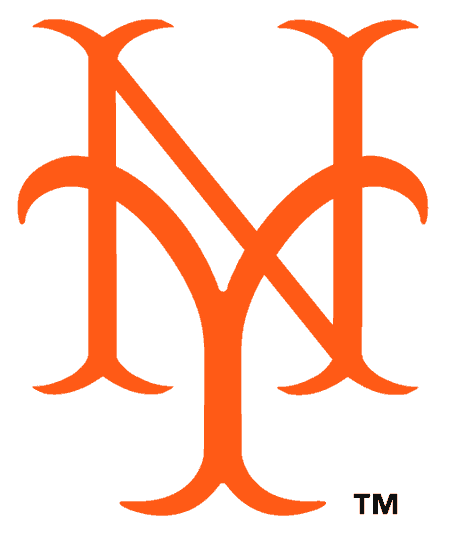 The Giants: Yes Virginia, there used to be a baseball team named the New York Giants for which the New York Giants football team was named. For a long time, both Giant teams lived together in a place called the Polo Grounds (or “Polio Grounds” in Brooklynese), a bathtub-shaped stadium on Coogan’s Bluff in upper Manhattan, a hard spit across the Harlem River from Yankee Stadium. The Yanks lived there too, as tenants, until Ruth built them a House across the way. There was a Brooklyn Dodgers football team too, once. A long time ago in the 1890s and early 1900s, the Giants were New York baseball, but they got toppled by the Yankees in the 1920s, when the Yanks began to play such greats as Ruth and Gehrig and later DiMaggio. The Giants never quite regained their place either, because the Brooklyn Dodgers started to play a more than fair game of baseball around 1940. The Giant/Dodger rivalry began in the late 19th Century, when Charley Ebbets and the Giants’ John McGraw had a falling out and used their teams to settle it. Not just on the field, either.
The Giants: Yes Virginia, there used to be a baseball team named the New York Giants for which the New York Giants football team was named. For a long time, both Giant teams lived together in a place called the Polo Grounds (or “Polio Grounds” in Brooklynese), a bathtub-shaped stadium on Coogan’s Bluff in upper Manhattan, a hard spit across the Harlem River from Yankee Stadium. The Yanks lived there too, as tenants, until Ruth built them a House across the way. There was a Brooklyn Dodgers football team too, once. A long time ago in the 1890s and early 1900s, the Giants were New York baseball, but they got toppled by the Yankees in the 1920s, when the Yanks began to play such greats as Ruth and Gehrig and later DiMaggio. The Giants never quite regained their place either, because the Brooklyn Dodgers started to play a more than fair game of baseball around 1940. The Giant/Dodger rivalry began in the late 19th Century, when Charley Ebbets and the Giants’ John McGraw had a falling out and used their teams to settle it. Not just on the field, either.
The players fistfought each other on the sidewalks, and in the barrooms, of New York. New York fans being what they are, this nasty rivalry became a hallmark of New York baseball. It was bad because both teams were competitors in the National League, and even when one team was way down and the other way up, they took great pleasure in ruining each others’ day. It was usually the case that the underdogs would pull an upset in a crucial game, ruining the contender’s Pennant chances. Since the teams played each other 22 times a season this was an ongoing battle. And because New York is a city of small towns this was not an intercity rivalry. It was a bedroom rivalry. Brothers would hurt each other over the question of who the better peanut vendor was, the guy in Brooklyn or the guy uptown. Fathers argued with sons. Daughters argued with Mothers. There were Dodger/Giant fan divorces recorded, and even a few homicides. New York City officials were legitimately fearful for the public safety the day Thomson homered off of Branca. It was a carnival atmosphere. Things only intensified during The Era because all three New York teams were in constant contention, and if there is anything a Dodger despises more than a Jint, it’s a Yankee. And the same goes for the Giant fan. And the Yankee fans. They hated, and were hated, universally. The Dodgers hated them because they couldn’t beat them. The Giants hated them because they could peer into each others’ windows. Worse yet, players were traded between the teams freely. Uncle Robbie started out as a Giant, then managed the Dodgers. Casey Stengel started out as a Dodger and ended up managing the Yankees. Leo The Lip, Dodger Manager one day, became Leo The Lip, Giant Manager the next. He’d been a Yankee first. Sal “The Barber” Maglie went from throwing close-shave pitches at Dodgers to throwing close-shave pitches at Giants.
Not everybody on the Dodgers let bygones be bygones. Even Jackie was traded to the Giants for the ’57 season, but he retired instead. And though players might be friends off the field, on the field was a different story: One day, Big Newk was coming close to beaning Willie Mays, and Willie asked Campy, behind the plate, to ask Newcombe to stop throwing so close. Campy came back, shrugged, and told Mays that Newcombe didn’t like Mays because he was African-American. So was Campy. So was Newk. They were all friends away from the job. Duke Snider confessed that he hated Halloween because it shared orange and black as colors with the Giants, and even he ended his career with them. When O’Malley kidnapped the Dodgers to LA he convinced Horace Stoneham to move the Giants to Frisco. The rivalry continues, but it’s a shadow of itself, since the teams are now 400 miles, not 4 miles, apart.
 The Yankees: And then there were the Yankees. If the Dodger/Giant rivalry was deep and abiding, the Dodger/Yankee rivalry was acute and violent. Relative latecomers to New York, the Highlanders had been one incarnation of the Baltimore Orioles before they came to New York and rented rooms at the Polo Grounds. At first a not very impressive team, the Yanks stood in the shadow of the Giants until the Yankees acquired Babe Ruth. Once the tenant drew more than the landlord, the Giants asked the Yanks to leave, hoping they’d move someplace remote, like Staten Island. Nope, the Yankees built the Yankee Stadium within sight of the Polo Grounds, and then proceeded to add insult to injury by dominating baseball for roughly the next century. And dominance it was: When the Yanks had Babe Ruth and Murderer’s Row the Dodgers had Babe Herman and the Daffiness Boys. The Giants were even less memorable.
The Yankees: And then there were the Yankees. If the Dodger/Giant rivalry was deep and abiding, the Dodger/Yankee rivalry was acute and violent. Relative latecomers to New York, the Highlanders had been one incarnation of the Baltimore Orioles before they came to New York and rented rooms at the Polo Grounds. At first a not very impressive team, the Yanks stood in the shadow of the Giants until the Yankees acquired Babe Ruth. Once the tenant drew more than the landlord, the Giants asked the Yanks to leave, hoping they’d move someplace remote, like Staten Island. Nope, the Yankees built the Yankee Stadium within sight of the Polo Grounds, and then proceeded to add insult to injury by dominating baseball for roughly the next century. And dominance it was: When the Yanks had Babe Ruth and Murderer’s Row the Dodgers had Babe Herman and the Daffiness Boys. The Giants were even less memorable.
The Yanks have appeared in 39 World Series, winning 26. Being in different leagues meant that the sixth place Dodgers would never meet the first-place Yankees, Until the first place Dodgers of 1941, 1947, 1949, 1952, 1953, 1955 and 1956 butted heads with The Boys From The Bronx, the Dodgers never knew what pain really was. In truth, the two teams were so evenly matched that had they played each other exclusively, their averages would have been .501 to .499, and the Dodgers would have had the higher number as often as not. The Dodgers stand second to the Yankees in World Series appearances. Including Los Angeles, the Dodgers have been in the Fall Classic 18 times—11 of them against the Yankees, who have bested them 8 times. Dodger fans came to curse their “bad luck” as the Bums fell down time and again, most often in seven game contests and frequently because of fluky plays like Mickey Owens’ dropped ball. In 1952, the Dodgers had possibly the best team in baseball, ever. In the Series, both teams averaged 4.5 runs per game. The ERAs were equal. The Dodgers had 64 hits and 8 homers. The Yankees had 56 hits and nine homers. The Yankees won the Series, but they never defeated the Dodgers. The fact is that Dodger fans wanted to win and needed to win the Series, but the odds become very long, no matter how good you are, when your opponent can capitalize on virtually every turn of events, even, and especially, the completely unexpected or downright freakish. The 1956 World Series, in which the Dodgers defended their title, is a case in point: Another seven game contest, it closely mirrored 1955. The Dodgers lost the first two in ’55. They won the first two in ’56.
They had won the next three in 1955. In 1956 they lost the next three. They won game 6 in ’56, though they’d lost it in ’55. The difference was that the Dodgers lost game 7. Game 5 was the decider, however. On that day, Don Larsen, a workmanlike Yankee pitcher known more for his nightlife than his day job, threw the only perfect game ever in World Series history, blanking Brooklyn in an historic showdown. What isn’t remembered so well is that Sal Maglie, pitching for Brooklyn, pitched a five-hitter that day and held the Yanks to two runs, a game winner under almost any other circumstance. Had Larsen not been flawless that day, it’s likely Brooklyn would have earned a second Series ring. Such heartbreaks defined the Brooklyn Dodgers. But like a fighter who refuses to stay down, the Dodgers climbed to their feet every October and grappled with the Yankees. In the 44 World Series games played between Brooklyn and New York between 1941 and 1956, the Yankees scored only 28 more runs than the Dodgers; that is, for every 1 run that Brooklyn scored, New York scored 1.57. Half a run is hardly a mark of true dominance. The teams were opposites, right down to their respective ballparks. Yankee Stadium was solid, enduring, imposing, the place for serious ballplayers and fans.
Ebbets Field was small, oddly configured, and the home of “Bums” and other misfits. In the minds of the public, the pinstriped Yankees came to represent Wall Street, Big Government, Business and monied interests. The Dodgers on the other hand, were a bit unshaven and a bit slovenly, a team of working-class egalitarian populist heroes. The victory of 1955 therefore, was not just a victory of team against team, it was a victory of the little guy over the man with the cigar. The Yankees should have played in suits and ties, the Dodgers in mechanics’ overalls.
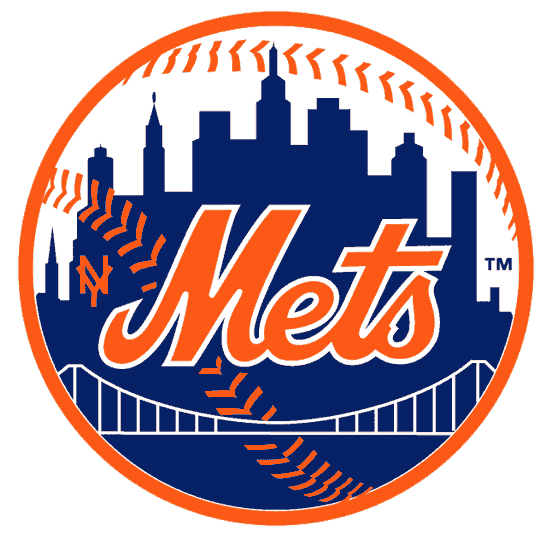 The Mets (or as I like to refer to them, “the red-headed offspring of the Giants and the Dodgers”), got their start in 1962, playing in the Giants’ old digs, the Polo Grounds. Everything about the Mets speaks of their shared parentage, and indeed it figures that the always hostile Giants and Dodgers would leave a living descendant. When O’Malley and Stoneham headed for the Wild, Wild West, they left behind them a city which had been the world capital of baseball, now bereft of two of its three battling teams. Baseball all but died in New York. The Yanks went into hibernation for many years. Attorney William Shea, a former associate of Walter O’Malley, Esq. (“Walter couldn’t argue a parking ticket,” Shea proclaimed) was so angry about the dual defection (at least Stoneham had apologized to the children of New York, while O’Malley did nothing), that he pressed the National League to reassert itself in New York tout suite. At first Shea tried to lure an existing team away from home, but the ethics of the thing dictated another approach. Shea created the “Continental League” and helped jump start several expansion teams. The Continental League went nowhere, but its teams joined the NL and the AL. When the New York team was in the planning stages, several names were considered, among them “Giogders” (how would you pronounce that?), but Shea and his partners decided on “Metropolitans” which had been the name of one of the 19th Century ball teams that sold out, sending its players to the Dodgers and the Giants. And just as the old Mets fed the Dodgers and the Giants, the old Dodgers and Giants fed the new Mets, who signed up a raft of popular if long in the tooth Dodger and Giant players. The Mets adopted Giant Orange and Dodger Blue as its colors, and moved into the Polo Grounds (Ebbets Field was gone, and Shea Stadium not yet built). The Mets borrowed the Giants’ “NY” logo, but though they looked like their mother and lived in her house, they behaved like their father. Echoing the Daffy Dodgers of old, they amassed the worst record in Major League history (40-120) in 1962, and though they managed to win the Series in 1969 (under Gil Hodges) and again commandingly in 1986, and played the first Subway Series with the Yankees in 44 years in 2000, remaining perennial contenders, they’ve developed a very Brooklyn Dodger-like habit of playing squeaker games, losing huge leads in the ninth inning, or blowing shoo-in Championship runs by melting down. In 2007 they lost 12 of their last 17, and lost their NL East Championship berth on the last day of the season (1951, anyone?).
The Mets (or as I like to refer to them, “the red-headed offspring of the Giants and the Dodgers”), got their start in 1962, playing in the Giants’ old digs, the Polo Grounds. Everything about the Mets speaks of their shared parentage, and indeed it figures that the always hostile Giants and Dodgers would leave a living descendant. When O’Malley and Stoneham headed for the Wild, Wild West, they left behind them a city which had been the world capital of baseball, now bereft of two of its three battling teams. Baseball all but died in New York. The Yanks went into hibernation for many years. Attorney William Shea, a former associate of Walter O’Malley, Esq. (“Walter couldn’t argue a parking ticket,” Shea proclaimed) was so angry about the dual defection (at least Stoneham had apologized to the children of New York, while O’Malley did nothing), that he pressed the National League to reassert itself in New York tout suite. At first Shea tried to lure an existing team away from home, but the ethics of the thing dictated another approach. Shea created the “Continental League” and helped jump start several expansion teams. The Continental League went nowhere, but its teams joined the NL and the AL. When the New York team was in the planning stages, several names were considered, among them “Giogders” (how would you pronounce that?), but Shea and his partners decided on “Metropolitans” which had been the name of one of the 19th Century ball teams that sold out, sending its players to the Dodgers and the Giants. And just as the old Mets fed the Dodgers and the Giants, the old Dodgers and Giants fed the new Mets, who signed up a raft of popular if long in the tooth Dodger and Giant players. The Mets adopted Giant Orange and Dodger Blue as its colors, and moved into the Polo Grounds (Ebbets Field was gone, and Shea Stadium not yet built). The Mets borrowed the Giants’ “NY” logo, but though they looked like their mother and lived in her house, they behaved like their father. Echoing the Daffy Dodgers of old, they amassed the worst record in Major League history (40-120) in 1962, and though they managed to win the Series in 1969 (under Gil Hodges) and again commandingly in 1986, and played the first Subway Series with the Yankees in 44 years in 2000, remaining perennial contenders, they’ve developed a very Brooklyn Dodger-like habit of playing squeaker games, losing huge leads in the ninth inning, or blowing shoo-in Championship runs by melting down. In 2007 they lost 12 of their last 17, and lost their NL East Championship berth on the last day of the season (1951, anyone?).
Shea Stadium, as it was named, had originally been on the drawing boards as a new home for the Brooklyn Dodgers, but O’Malley, insisting that the Dodgers had to stay in Brooklyn and could not move the three miles to Queens, packed them up and went a mere 3000 miles away to Los Angeles. Shea opened in 1964. It closed in 2008. Mets owner Fred Wilpon, a Brooklyn Dodger fan to his core, built a new stadium, Citi Field, reminiscent of Ebbets Field and featuring a “Jackie Robinson Rotunda.” With the banking crisis of 2009, the park got a new nickname: Debits Field. Unfortunately, it lived up to it’s name, as the Mets proceeded to have one of their worst seasons in many a year.
 The Brooklyn Cyclones. As part of his earnest attempt to return part of Brooklyn’s baseball patrimony, in 2001 Fred Wilpon established a Mets “A” Affiliate Minor League team, the Brooklyn Cyclones, at KeySpan Park in Coney Island. The Cyclones have won nine titles in eight years, and routinely play to standing room only crowds in their 10,000 seat stadium on the beach. Echoing the Brooklyn Dodgers, they have adopted a variation of the familiar “B” logo, have mascots named Pee Wee and Sandy, and call themselves The Beach Bums. KeySpan Park is also graced by a commemorative statue of Pee Wee Reese with Jackie Robinson. Baseball thrives in Brooklyn, after a 44 year absence!
The Brooklyn Cyclones. As part of his earnest attempt to return part of Brooklyn’s baseball patrimony, in 2001 Fred Wilpon established a Mets “A” Affiliate Minor League team, the Brooklyn Cyclones, at KeySpan Park in Coney Island. The Cyclones have won nine titles in eight years, and routinely play to standing room only crowds in their 10,000 seat stadium on the beach. Echoing the Brooklyn Dodgers, they have adopted a variation of the familiar “B” logo, have mascots named Pee Wee and Sandy, and call themselves The Beach Bums. KeySpan Park is also graced by a commemorative statue of Pee Wee Reese with Jackie Robinson. Baseball thrives in Brooklyn, after a 44 year absence!
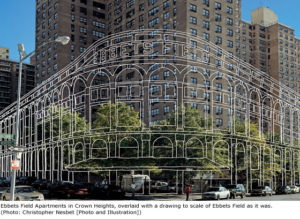
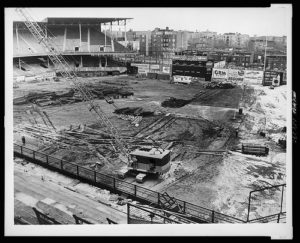
The Great Debate
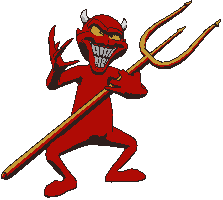
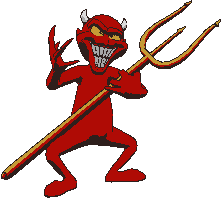
Every Brooklynite knows the story: One day the Dodgers were in Brooklyn, and one day not long after, they weren’t, courtesy of their owner, Walter F. O’Malley. There has been a powerful revisionist movement recently, funded by the O’Malley family, to demonize Robert Moses and to absolve Walter O’Malley in connection with his removal of the Brooklyn Dodgers from the Borough in 1958. After 50 years, O’Malley money has managed to get the man admitted to Cooperstown, but Gil Hodges still waits.
The revisionists say that baseball was finished in Brooklyn, that it was time for the sport to become bicoastal, and that O’Malley is the genius who brought it there. Even though I know I won’t end the argument, I think it is important to present a fair and balanced argument against the revisionists, my version of which I will sum up below, with apologies to sensitive Los Angelenos:
Walter O’Malley —and only Walter O’Malley —had the power to decide whether the Dodgers would stay or go. No one else.
O’Malley is described as a “visionary” who brought Major League Baseball to the Left Coast. This is true, but only if one considers that he brought “Major League Baseball, Inc.” the corporate entity to California. The Pacific Coast League, which had been lobbying to be the third big league, and which paid its players more than MLB, had been functioning there successfully for years. MLB owners, led by O’Malley, were resistant to PCL’s pay scales and limited form of free agency, and looked to break the PCL, which they did. It wasn’t vision that took the Giants and Dodgers out of New York. It was corporate war.
Ebbets Field was said to be decrepit, too small, and too old to serve as a ballpark any longer. This is simply untrue. Fenway Park (opened in 1912, the year prior to Ebbets Field) is still maintained and functioning.
The “neighborhood changed,” yes, but it declined after the Dodgers left. The new arrivals, from Puerto Rico, the West Indies and other places would have been Dodger fans just as my European immigrant parents were.
Some people try to claim that baseball was “through” in Brooklyn, as though Brooklyn baseball began and ended with The Boys of Summer. Yes, the “boys” were in their thirties, but there had been “boys” before them and there would have been “boys” after them. And fans too, who would have continued the traditions of being a Dodger fan. Baseball had a 100 year history in Brooklyn. What changed the sport irrevocably was Free Agency, obscene amounts of money, and drugs, both performance-enhancing and recreational. None of that had to do with O’Malley and the Brooklyn Dodgers circa 1957.
Declining attendance was a fact of life for ballclubs in the 1950s. From a postwar peak in 1947, in-person participation was being eroded by television throughout baseball. O’Malley compared Brooklyn’s strong receipts to Milwaukee’s exemplary ones, saying that people did not want to come to Ebbets Field. In fact, the newly-arrived Milwaukee (nee Boston) Braves pulled over 2 million in attendance due mostly to novelty. The Braves lived in Boston from 1871 to 1953.They left Milwaukee for Atlanta in 1966.
The O’Malley pundits say that the Dodgers were losing money in Brooklyn. This is simply not true at all. Roger Kahn recently wrote:
For one of my first books Walter O’Malley graciously provided me with a fiscal breakdown for the Dodgers’ season of 1953. He was better than doubling his investment with the Dodgers every year. Then why move? Because Ebbets Field was old? So were Wrigley Field and Fenway. Nothing wrong with Ebbets that a little remodeling couldn’t have fixed. But for motivation try this: O’Malley’s hated rival, Branch Rickey, had revolutionized baseball by signing Jackie Robinson. O’Malley liked money, but he longed more passionately to equal or surpass Rickey in the annals. That is the underlying reason behind the pioneering voyage to California.
Parking at Ebbets Field was not geared to the age of the superhighway. That’s a fact. With only 700 spots and no direct train access, transportation to the field was difficult. O’Malley could have (but did not) bought up surrounding properties and put in a parking complex, or he could have accepted Robert Moses’ offer of a new Dodger ballpark in Queens which would have met his transportation and seating needs. He could have (but again didn’t) taken up the Town of Patchogue’s offer of land for a new stadium on Long Island. O’Malley refused he said, because Patchogue was too far for the fanbase to travel. (That would be the same fanbase that he claimed was leaving Brooklyn in droves for Long Island.) Apparently, Queens County and Suffolk County were too far for Brooklyn fans to visit but Los Angeles wasn’t. O’Malley had had the Dodgers play at Roosevelt Stadium in New Jersey several times in 1956. His assertion that the Dodgers had tostay in Brooklyn, therefore, was just verbiage for public consumption. Access and parking might have been a reason to leave Ebbets Field, but not to leave the Greater New York area. There was simply no reason to remove the team so far from its fanbase. No one was pushing him out.
The evil Robert Moses refused to build a new stadium for the Dodgers in Brooklyn, the revisionist pundits say. Not quite. O’Malley wanted Moses, a public official, to condemn private property at Atlantic Yards in Brooklyn for O’Malley’s Buckminster Fuller-designed domed stadium. Moses refused. It was, honestly, the first time, and probably the last, that Robert Moses refused to knock something down to build something else. The two men disliked each other. Brooklyn suffered for it. But the Atlantic Yards condemnation would have given O’Malley acres of prime downtown Brooklyn real estate for pennies on the dollar, and Bob wasn’t about to line Walter’s pockets, especially without a quid pro quo. This was a classic case of “What’s In It For Me?” Instead, Moses offered O’Malley a stadium at Flushing Meadow—which became Shea. O’Malley refused. The Dodgers left, Shea went up, came down, and now Citi Field stands in its place. Fifty years later, Atlantic Yards is still under consideration for a public arena. Maybe when the Dodgers come home?
In sum, the only reason O’Malley hijacked the Dodgers to Los Angeles was because he wanted to. Unlike New York City, Los Angeles was willing to give him a free land grab with mineral rights, with tax perks, and with no strings attached. He took the deal. Good business? Not when you consider that the move prematurely ended The Era, that the double move (remember, the Giants went, too) alienated fans in the largest market in the United States, that it sent baseball into a permanent decline making football the preeminent U.S. sport, that the current Los Angeles franchise is worth less than either existing New York team, and that LA fans are known to “arrive in the 3rd and leave in the 7th.”
The removal of the Dodgers was, in retrospect, the first in a series of acts of shortsighted corporate decisionmaking that makes banks fail and blue chip companies shut their doors. Through the lens of time Walter O’Malley looks more and more foolishly greedy and less and less the brilliant innovator his proponents wish that he was.
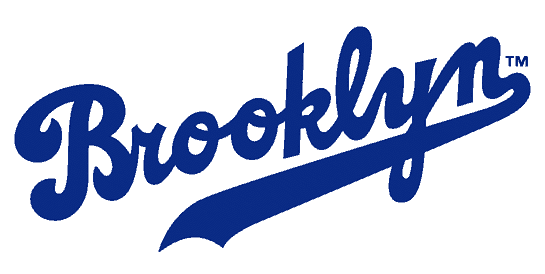 Bring The Dodgers Back To Brooklyn!
Bring The Dodgers Back To Brooklyn! 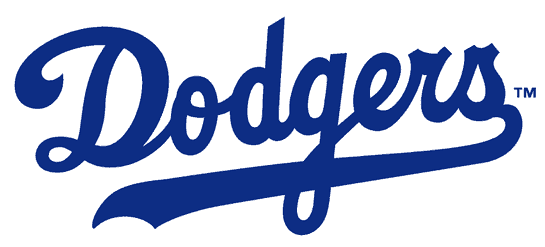
It can be done, it can be done without disrupting Los Angeles baseball, and I don’t know why I seem to be the only person who’s apparently ever considered the alternative I’m about to describe. I once wrote Frank McCourt a letter about it, and I actually did get a call from Dodger Stadium about it, but I never heard another word.
As plans go, it’s a good one, right in keeping with the spirit of innovation that was the Brooklyn Dodgers’ hallmark, right up until they innovated themselves out of existence by bringing Major League Baseball to California.
The Brooklyn Dodgers invented the curveball and the fastball, the warning track, the padded outfield wall, the batting helmet, tickets, and televised games. They innovated when they integrated.
Time for another innovation: The Two-City Team.
Los Angeles owns the rights to the Brooklyn livery, and they even wear it on commemorative days. It would be a relatively easy matter to announce that they are now “The Brooklyn And Los Angeles Dodgers,” and to wear Brooklyn livery on a set schedule.
One of the most bitter aspects of the West Coast legacy is that the Brooklyn Dodgers are forgotten. O’Malley held a commemoration day for Campy in Los Angeles, totally slighting the team’s historic fanbase. The whole “Walter O’Malley As Visionary” argument is really an argument about the value of Brooklyn to the Dodger organization. I have spoken to LA fans who tell me that the Los Angeles franchise deeply honors its Brooklyn past. Yes, but they honor it in Los Angeles not in Brooklyn.
With apologies to Fred Wilpon and the good folks in Flushing Meadow, it’s shameful that the Mets have had to build a “Jackie Robinson Rotunda” in a replica Ebbets Field, and erected a statue of Jackie and Pee Wee to honor a moment in Brooklyn Dodger history, while the Dodgers have done nothing. As much as a Mets fan as I am, the Mets cannot ever be the Brooklyn Dodgers.
But the Dodgers can. Encourage an active Brooklyn presence. Open a Brooklyn Dodgers museum in Brooklyn; lease “Debits Field” from the Mets for Dodger games in the East; schedule fifty or sixty games at Citi Field; use the Brooklyn livery at those games; and resurrect True Dodger Blue on its home soil at last. In New York, we have “The Train To The Plane, “a subway that runs to the airport. In the event of a Subway Series with the Yanks, the Dodgers will have to take a plane to the train.
Will it be The Era? No. Will it bring back the days of The Boys of Summer? It can’t. But it will bring “Our Dodgers” home. Who says you can’t own two houses?
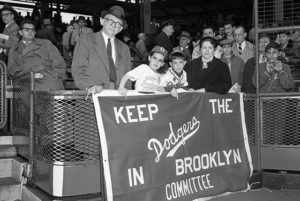
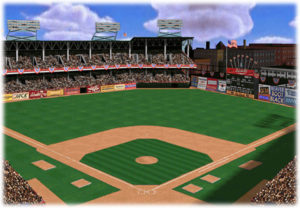
This page started out innocuously enough as entertainment for you, my visiting Clients. I had wanted to share something of my love for the Brooklyn Dodgers and share my sense that we had lost something inexpressible when Dodger Time came to an end in 1957. I considered posting photographs of my Brooklyn collectables, but soon realized that a model of Ebbets Field means nothing unless my visitors know what and where and why Ebbets Field was. So I began to recount the history of the team, which then led to a section on notable Dodger celebrities, which of course, meant discussing the great years of the 1950s and the unique men who made the Brooklyn Bums possibly the finest and longest-lasting assemblage of baseball talent anywhere, ever. The rivalries and the legacies the “Boys of Summer” have bequeathed us are timeless and All-American, even if you know nothing of baseball or are a newcomer to our shores. I created this page for my Mother and Father and the others who were there, for everyone, like me, who were born into the immediate afterglow of Dodger Time, and for those of us who could never experience it at all. I hope this page gives you all a sense of what it was like to be there.
By the time I was born, Ebbets Field was nothing but an empty plot of land slated for redevelopment. Maybe a few bricks and some left-over bits of signage and ballpark fencing were left. I don’t recall ever seeing it. When I was very, very young and we still lived in the Brooklyn neighborhood of East New York, I remember my father and I, and a friend of his, gathered around the radio in the kitchen on a bright summer day listening to the game. It had to have been the Mets playing at the Polo Grounds. Maybe Snider was hitting that day. I have no idea. It was always just one of those warm snapshot memories of childhood, the ones that never fade. The men were drinking Schaefer, local to Brooklyn, and once a prominent sponsor at Ebbets Field. What occurs to me now, looking back, was that I was present at a reenactment of what had once been, a shadow experience of Dodger Time. Those years, from 1958 to 1964, had to have been a kind of Otherworld for Brooklyn fans. Erskine pitched, Snider hit, Hodges fielded—in California. Then, in 1962, some of them were back in New York in a foreign uniform, playing in the Giants’ old home, which was soon to share the fate of Ebbets Field. Even the same wrecking ball was used. By the time Shea opened in ’64, The Boys of Summer had passed into autumn, and Dodger Time had ended.
But those who lived in Dodger Time cannot forget. The voices, still strong, still pained, continue to go on, incredibly after all these years, like my friend, “Dodger Deb,” who in 2003 posted this online: —¦ it was like an extended family. Everything that happened to any of the players, or people in the organization, the sportswriters who covered OUR team, or any of the fans, didn’t just happen to them, it happened to all of US! I can’t tell you EXACTLY WHEN all this ‘became one’ … IT just (seemed) to ‘HAPPEN’ … and WE LOVED BEING PART OF IT! … OUR DODGERS KNEW HOW MUCH WE LOVED THEM — AND WE KNEW HOW MUCH THEY LOVED US! In the end, THAT was ALL that mattered! We have been living on THAT CONNECTION to this day!”
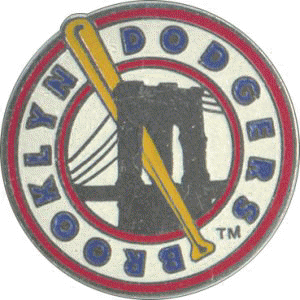
This page is dedicated to the blessed memory of my father, Jack Minde (1928-2010).
He never took me to Yankee Stadium.
Except for O’Malley, we’d have gone to Ebbets Field.
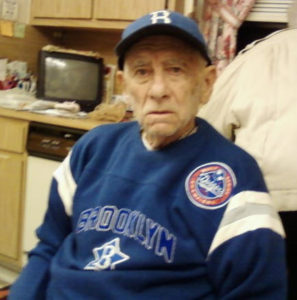 Even suffering from Alzheimer’s Disease my Dad was always a Brooklyn Dodgers fan!
Even suffering from Alzheimer’s Disease my Dad was always a Brooklyn Dodgers fan!
The photos, music, and text on the page have been created by me or pulled from a variety of sources, particularly my own collection and the Internet. I thank all the providers for their contributions, known and unknown, and acknowledge the existence of all copyrights, again known and unknown. Copyright claims will be acknowledged. I’d appreciate updated information on any factual errors on the page. My opinions are my own. The music “Follow The Dodgers” is an original composition by Gladys Goodding; “Johnny Podres” is by Allen Swift, and “Jackie Robinson” by Count Basie. “Bring The Dodgers Back To Brooklyn” is by Tad Richards and Missy Alexander. Terry Cashman is “Talkin’ Baseball.” Thanks, folks!

